GOING GREEN





























As the UK’s back-up power specialists, that’s what our customers value most from us. Customers throughout the UK and beyond trust us with their back-up power solutions.













kpm media Unit 1 Mill Place, Platt Business Estate, Maidstone Road, Sevenoaks, Kent TN15 8TB Tel: 01322 662289
Editor Sara Bean sara.bean@kpmmedia.co.uk
Assistant Editor & Social Media Development
Sarah O’Beirne sarah.obeirne@kpmmedia.co.uk Tel: 01322 476815
Director & Designer Warren Knight warren.knight@kpmmedia.co.uk Mob: 0780 1947757
Sales Director Danny Grange danny.grange@kpmmedia.co.uk Mob: 07867 418994
Business Administrator & Circulation Maxine Howell maxine@kpmmedia.co.uk
Accounts Diane Jarvis accounts@kpmmedia.co.uk
Group CEO Nigel Copp nigel.copp@kpmgroup.co.uk
Editorial steering committee
Alan Hutchinson, Facilities Director, Howard Kennedy LLP
Charles Siddons, Head of Operations, NHS Property Services
Darren Miller, Group Head of Real Estate & Workplace, Experian
Ian Wade, Head of UK Estates, British Medical Association
Lucy Hind, Senior FM Lecturer, Leeds Beckett University
Paul Cannock, Head of the Estates and Facilities Management Department, European Space Agency
Russell Wood, Senior Facilities Manager at Travers Smith LLP
Russell Burnaby, Head of FM, Regeneration and Environment, Brent Council
Simon Francis, Director of Estates and Facilities, The Institute of Cancer Research
Simone Fenton-Jarvis, Group Director of Workplace Consultancy and Transformation, Vpod Solutions
Wayne Young, Facilities Manager at DB Cargo (UK)
Total Average Net Circulation 12,150 July 2022 to June 2023 SUPPORTED BY
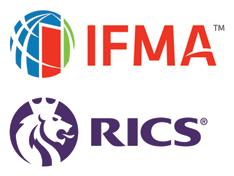
kpm media adopts a sustainable policy of using paper from managed forests. Printed in the UK by The Gemini Print Group www.gemini-print.co.uk
© Copyright 2024 kpm media
The publisher does not necessarily agree with the views and opinions expressed by contributors. No material may be reproduced in part or whole without written permission from the editor. Editorial contributions are accepted on an all-rights basis only. Letters to the editor may be published in their entirety or in edited form and remain the property of kpm media. While due care is taken to ensure the accuracy of information contained in this magazine, the publishers cannot be held responsible for any errors in editorial articles or advertisements. Subscriptions are available to non-qualifying and overseas readers at £120 p.a. (UK), £160 p.a. (EU countries) and £240 p.a. (overseas-other).

The main strength of FMJ’s Editorial Steering Committee is that it reflects the experiences of client side FMs working within a number of sectors. We were delighted then to gather a group of them together for a special roundtable discussion for this month’s issue. They represent an incredibly diverse cross section of organisations, from local government to space exploration.
While the discussion was wide ranging, the overriding sentiment was the importance of helping their respective organisations meet net zero targets, fulfil wider societal sustainability goals and ease their transition into the new era of hybrid working.
While it was also agreed that adapting workplaces to accommodate changing employee needs and creating an employee experience is a group e ort which will demand better collaboration between FM and HR, allied to this is the need within the FM community to address its own recruitment and retention by o ering more opportunities for training and skills development.
The discussion highlights the need for the facilities management sector to resolve its long-standing problem of a low intake of young talent early on in their careers. This is why the announcement (see Association News) of the Deborah Rowland Scholarship, created in collaboration with the Institute of Workplace and Facilities Management (IWFM), is so important in helping to support the next generation of FM professionals through financial and mentoring support.
Deborah Rowland, Director of Public A airs at Sodexo UK and Ireland since 2017, is living with advanced cancer and wants to give capable individuals a ‘head start’. I first met Deborah back in the early noughties to talk about her role as FM Project Manager in delivering the iconic Barclays headquarters in Canary Wharf. She’s continued to have an amazingly positive influence on the sector and wants to give something back by challenging barriers to progress and to foster future leaders from diverse backgrounds.
For more details go to: https://bit.ly/4cM6wmI
As always, we’d welcome your feedback about any aspect of the magazine, together with your insight into what’s happening in the FM sector.





















This month’s summary of everything that has hit the headlines in the FM sector.
The latest news and views from membership organisations.
UKREiiF, the UK’s Real Estate Investment and Infrastructure Forum focussed on how RE can develop stronger, more sustainable communities.







The Terrorism (Protection of Premises) Bill (Martyn’s Law) will require those responsible for publicly accessible venues and locations to improve the safety of visitors says Barrie Millett, Director of Assurance, Mitie.
Charlie Mowbray of Ideal Heating advises robust water treatment and ongoing maintenance regimes ensure the safe and reliable operation of commercial pressure jet burners.
Nigel Robinson from SWG on how an integrated tech solution that includes space management so ware, CAFM and BIM is supporting the FM and estates team at NHS Kettering.
18 Akanksha Khatri, Head of Nature and Biodiversity, World Economic Forum believes organisations must strive to achieve the collective goal of a nature-positive world for all.
20 From o setting to misleading ‘eco-friendly’ claims, greenwashing comes in many forms, so what can FMs do to avoid it undermining their sustainability goals?






Members of the FMJ Editorial Steering Committee, representing both public and private sector organisations, discuss the big issues impacting in-house FMs.
28 Front of house provision increasingly relies on digital solutions to help meet fluctuating demands, but can this still provide a human touch in the guest experience asks Sara Bean.

Roger Marks, MD, Aeromark says HVAC service providers can increase their firsttime fix rate in maintaining systems by using the right digital solutions.
34 The roll out of electric heat pumps should be a major topic for the business as well as the domestic market says Rob McCauley of Trane UK.
36
The concept of the ‘golden thread’ under the Building Safety Act 2022 is o en perceived as complex and daunting, but it needn’t be so explains Marc Bradfield of Bureau Veritas.
40
Wesley Smith, Sales and Marketing Director at The Clean Space explains why a customised approach to cleaning services should support the sector and culture of each client.







42
Building Management Systems aren’t being operated to their full capability. Are you using your BMS system to improve energy e iciency asks Karl Cundill, Partner at LitmusFM.

51 Find out who’s moving where in the facilities management profession.
52 Less than a quarter of businesses have a menopause policy in place. Lyndsey Oliver, Head of ED&I (Equity, Diversity & Inclusion) BaxterStorey advises on the importance of retaining this large and experienced group of people.
53 Ian Meaden, COO of EMCOR UK, argues for organisational commitment to nurturing talent and cultivating a culture of continuous learning.
A brief roundup of the latest careers news in the facilities management sector.
How Amulet Security is helping to deliver travel safety on the Manchester Bee railway by deploying Transport Safety O icers (TSOs). We profile some of the winners of the British Safety Council’s International Safety Awards (ISAs) 2024 who demonstrate commitment to improving the health, safety and wellbeing of their organisations. The British Pest Control Association (BPCA) explains its’ policy demands for the next government and the legislation you can expect to see coming in over the rest of the year. We’ve a look at the particular issues ensuring electrical installations in old buildings are not only safe and compliant but also protect their historic character and fabric. And we present the results of the recent SWG/FMJ so ware survey.

Sarah Rushton, Partner and Head of the Employment Team at Buckles Solicitors with Eleanor Adshead, Solicitor, Employment Team
A Restrictive Covenant in an employment contract aims to prevent an employee from doing ‘something’ after they leave employment.
Types of Restrictive Covenants
There are four main types of Restrictive Covenant clauses:
• Non-solicitation: Aims to prevent ex-employees from approaching a customer or client of their ex-employers, with a view to soliciting their business.
• Non-dealing: Aims to prevent ex-employees from working with certain clients or customers for a period of time after their employment has ended and does not require the employee to have approached the client in question or to have tried to actively solicit them. The ex-employee is simply prevented from providing services to the customer in question whether the exemployee has made an approach or not.
• Non-poaching: Aims to prevent an ex-employee from soliciting their ex-employer’s current key employees.
• Non-competition: Aims to prevent ex-employees from joining a rival employer and undertaking similar work for a defined period after their employment has ended.
Reasons to implement Restrictive Covenants
Employees, will often have access to confidential information, customer and client information, as well as other trade secrets.
A skilled employee may have developed a client following, the current employer is keen to retain once that employee has left. An employer, having invested time and money training people, will not want them to leave. Equally, when the employee leaves, they may want to use their contacts to set up or work for a competing business. An ex-employee may want to persuade their ex-colleagues to join them in a new business because those colleagues are good at what they do.
If drafted correctly, Restrictive Covenants are a useful tool for businesses, as they can deter employees from joining competitors, from soliciting or dealing with clients or from poaching the exemployer’s staff.
Drafting a Restrictive Covenant
Seek legal advice when drafting a Restrictive Covenant, as care is needed to ensure the terms of the restriction are clear, concern the employee in question and the harm they could cause to the employer’s business if they leave.
It is a mistake for employers to try to make a restriction as broad and lengthy as possible, as when considering enforceability, the Court starts from the position that Restrictive Covenants are unenforceable.
Those seeking to enforce them must show they have a legitimate interest to protect and the restriction goes no further than what is reasonably necessary to protect it. A Court will not take a restriction it considers unreasonably wide and amend it, to make it enforceable.
How are Restrictive Covenants enforced?
There are several ways, including:
• Injunction: a business may apply for a Court injunction, which would effectively prohibit the ex-employee from engaging in the restricted activity.
• Damages: if the Court considers a Restrictive Covenant is enforceable and has been breached, it will assess whether the breach has caused the business financial loss and if so, how much.
• Undertaking: the ex-employee might offer an undertaking to observe the Restrictive Covenants pending a full trial.
• Act against a Third Party: an ex-employer may pursue a claim against any third party which has benefited from the exemployee’s breach, such as the new employer. The former employer must be able to prove the third-party induced the breach which caused the ex-employer a financial loss.
Three-quarters of UK businesses are on the hunt for a new workspace, according to new research from digital infrastructure specialist, NCG.
The independent survey of 1,002 senior decision-makers within UK businesses has found that 70 per cent of businesses currently use an o ice or workspace on a hybrid (46 per cent) or full-time (24 per cent) basis.




Serviced o ices (37 per cent) are the most common type of space businesses use, followed by o ice and meeting space hired by the hour or day (36 per cent), private o ices (35 per cent) and flexible or coworking space (32 per cent), with many businesses using more than one type of space to meet their needs.
Of all the businesses that currently use any form of workspace, 76 per cent said they are either actively searching for a new space or plan to start looking in the next 12 months. Most (59 per cent) said they are regularly assessing the choice of di erent workspaces to see which best fits their needs.
Speaking specifically to those who currently use a flexible or coworking space, nearly half (45 per cent) agreed that they were unlikely to ever rent their own private o ice again, with 59 per cent agreeing that flexible workspaces are the ideal fit for their business’ needs.
A er soon-to-be 25 years of serving as Chief Executive for the British Council for O ices, Richard Kauntze will be stepping down in summer 2025. His successor will be appointed by the new BCO Presidential team in due course.

During Kauntze’s tenure, the BCO has grown in membership and become established firmly as the o ice sector’s source of education, guidance and discussion. Since Kauntze joined as Chief Executive in 1999, membership has increased from 585 to over 4,000, spanning a range of disciplines from leading architects and developers to major o ice occupiers.
Kauntze has also worked hard to increase the BCO’s geographical reach, expanding from its initial base in Reading to a strong national presence across regions with a London headquarters.
The BCO NextGen programme has advanced over the past decade, with 25 per cent of the BCO’s total membership now comprising of NextGen members –members aged 35 and under – demonstrating that the BCO is shored-up for the future. Kauntze was instrumental in the creation of the NextGen Committees, which provide a platform for knowledge-sharing, mentoring, networking and professional development across five regions.
In collaboration with the BCO Research Committee, the Presidential team and the BCO’s Head of Research, Kauntze has steered the BCO Research programme to inform upon and investigate continually the critical challenges in the o ice sector. This has seen vital research published on topics ranging from sustainability, agile working, health and wellbeing to designing for neurodiversity.
Working alongside the Presidential team, Kauntze is overseeing the introduction of two new BCO Committees – the London Regional Committee and the Life Sciences Committee. Each committee is being created to respond to emerging major trends in the sector, including London’s unique position in the British o ice market and the growth of life sciences into a notable real estate market.
Over two-thirds of CEOs view sustainability as a growth opportunity
Over two-thirds (69 per cent) of CEOs view sustainability as a leading business growth opportunity this year.
The 2024 Gartner CEO and Senior Business Executive Survey found CEOs are using sustainability to drive business growth through sustainable products and services (33 per cent); sustainable business practices (18 per cent); stakeholder engagement (18 per cent); and decarbonisation (18 per cent). Digital technology plays an important role in driving both financial and sustainability outcomes. For example, the Internet of Things (IoT), data and analytics can optimise wind turbines, which reduces costs and greenhouse gas emissions. AI and IoT can reduce food loss costs and waste; whereas a circular economy marketplace can create new revenue and reduce waste.
54 per cent of CEOs say their businesses are affected by changing weather patterns, at least moderately. The biggest impact of changing weather patterns cited by CEOs is operating dynamics (30 per cent), particularly changes to logistics, such as warehousing, timing and routing of deliveries.
Relocations (including nearshoring) comes in second (14 per cent), followed by automation, technology and data (13 per cent).
Kristin Moyer, Distinguished VP Analyst at Gartner said: “Despite much corporate greenwash, recent economic conditions could have triggered a reversion to ESG cynicism and a refocus on profit at all costs. However, the overall commitment of CEOs appears unwavering.”





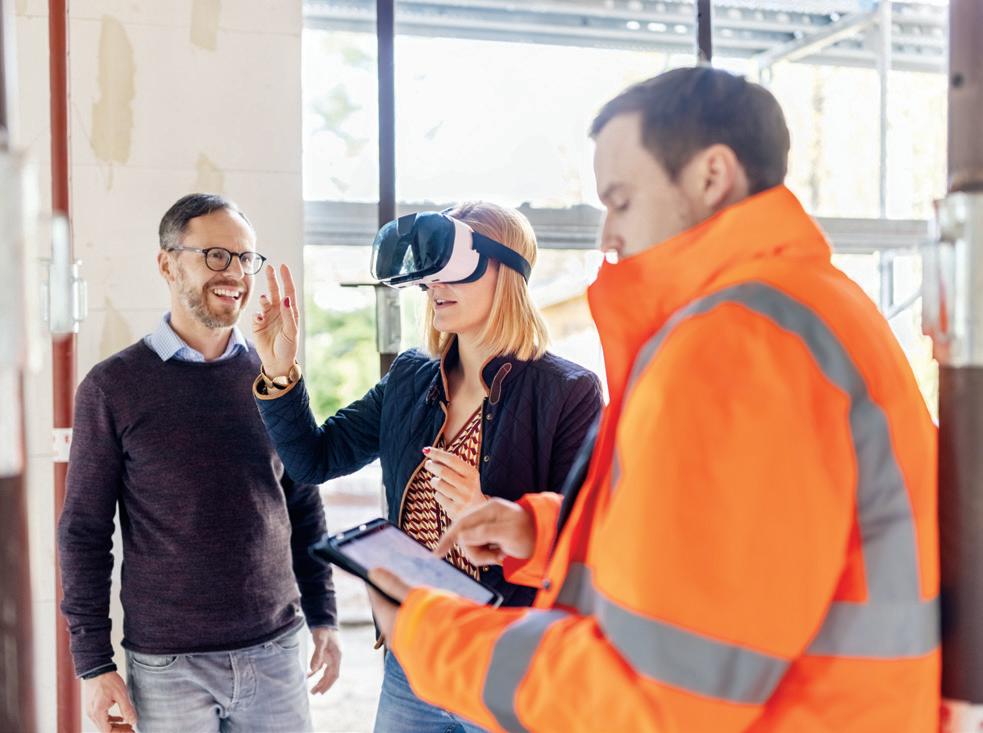
Findings from new research commissioned by global cloud enterprise so ware company, IFS, highlights the increasing optimism of the construction sector about the potential of AI.
More than three-quarters (76 per cent) of senior construction and engineering decision-makers at large firms in the UK say that their business holds high expectation for AI, while more than two-thirds (68 per cent) think their industry is ‘adopting AI at a faster pace than others’. Respondents identify multiple areas where AI will provide benefits. Thirty-one per cent of the survey sample say executive and board expectations of the value AI will deliver are especially strong in terms of enhancing market knowledge, while 29 per cent reference ‘product or service innovation’, and the same percentage cite ‘consistent growth of the business’.
Despite the high expectations, the sector faces challenges in fully leveraging AI. While 76 per cent of leaders report a high level of architectural readiness for AI adoption, concerns about the quality of AI resources, particularly human skills, persist. Over a third (36 per cent) rate the quality of AI skills in their business as merely passable, indicating a gap between AI aspirations and the existing capabilities within their teams. Of equal concern, more than a quarter (27 per cent) say upskilling is not a priority.
The journey towards AI integration is also at di erent stages across the industry. Thirty-six per cent of firms have developed clear strategies and are seeing tangible results from their AI initiatives, demonstrating the potential benefits of a well-planned approach. Another 31 per cent are in the process of gathering proposals for pilot projects, indicating a proactive stance towards exploring AI applications. Meanwhile, the remaining 31 per cent are still in the research phase, reflecting a cautious yet determined e ort to understand AI’s implications.
Despite these e orts, nearly two-thirds (64 per cent) of respondents believe it will take one to three years for AI to make a significant impact on their organisations, illustrating the need for patience and sustained e ort. Several obstacles are slowing AI adoption in the construction and engineering sector. Forty-two per cent of respondents identified the fact that their technology landscape is legacy-based as a factor slowing their progress in adopting and deploying AI across their organisation. Forty-one per cent said they were unsure of the potential use cases in their business, highlighting a need for clearer strategic direction.



Atthe Euro FM conference in June, professional development emerged as a key theme; training and qualifications, recruiting and retaining the next generation of leaders – creating rich career paths emerged as an industry imperative. This has been a key theme for IWFM’s recent work and plans.
For instance, results from our Skills Survey, conducted over June and early July, will help IWFM to ensure the competencies and behaviours that WFM professionals require remain fresh and relevant. By reaching out to our community, extending the Survey’s reach and maximising the voice of professionals, from the frontline to the C-suite, we’re able to enhance one of our key o erings – the Professional Standards Handbookwith the insight of on-the-job learnings. Established in 2014, the Professional Standards define the competences that are necessary to
be an e ective WFM practitioner at any career stage, forming a global competence model for the profession. The Standards can be used to benchmark skills, knowledge and competence for those working at all levels of the sector.
Professional development should be available at any point, so at the end of May we launched our Strategic Leaders Forum, which has evolved from the International Special Interest Group (ISIG), to support members in strategic leadership roles and those aspiring to the highest levels.
The new body sits alongside IWFM Networks that serve specialist groups, including Rising FMs, Veterans in FM and Women in FM. It underlines an ongoing commitment to advance and diversify the profession working with volunteers.
Furthermore, we announced The Deborah Rowland Scholarship, created in collaboration with one of WFM’s highest-profile practitioners. Debi, Director of Public A airs at Sodexo UK and Ireland since 2017, lives with advanced cancer and the Scholarship will cultivate tomorrow’s WFM
The Chartered Institution of Building Services Engineers (CIBSE) has launched the ‘CIBSE Flush Challenge’ as part of the organisation’s commitment to nurturing the next generation of engineers and addressing the skills gap in the industry.
A unique educational game, the CIBSE Flush Challenge has been designed to engage pupils aged nine to 11 in the fascinating world of building services engineering.

leaders through financial and mentoring support towards the achievement of an IWFM qualification in facilities management. It aims to demolish barriers to progress and to foster future leaders from diverse backgrounds.
Please spread the word to benefit prospective applicants. To find out more, search ‘The Deborah Rowland Scholarship’ and access the first IWFM article you see.
Our research and insight team are committed to producing original reporting to support the practitioners’ professional development and ultimately enhance the sector. For instance, the latest edition of our annual Market Outlook Survey report draws on a record number of survey responses and provide up-to-date findings on topics like space management, workspace investment and key areas to drive productivity and sustainability, including carbon reduction, technology and skills.



TheAs part of this initiative, which is partly sponsored by CIBSE Patrons, CIBSE STEM Ambassadors will utilise this innovative game during their educational outreach activities at schools, aiming to spark interest and curiosity about building services engineering among young minds.
Each participating team of pupils will receive a specially curated kit, featuring a 3D-printed model of toilet and pipes. The challenge involves assembling a functional flush system that e iciently uses water to flush a small raisin down the toilet. This engaging activity not only introduces children to the fundamental concepts of building services engineering but also instils the importance of water conservation and environmental responsibility.
For more information about the CIBSE Flush Challenge and how to get involved, visit CIBSE Flush Challenge. https://www.cibse.org/flushchallenge
Chartered Institute of Building’s (CIOB) Digital and Innovation Advisory Panel has published a new playbook on the use of AI in the construction industry, for built environment organisations of all sizes looking to get to grips with AI technology and understand how to get the best from it.
The free publication includes ways to evaluate its e ectiveness, while also considering matters such as ethics, cyber security and data protection. There is also a checklist to support new entrants, early adopters and experienced AI practitioners in making decisions about their use of the technology.
The playbook references how AI has the potential to revolutionise working processes for small and medium enterprises (SMEs), by enabling them to compete at a larger scale. It says through use of AI, SMEs can tap into capabilities that were once only available to large construction organisations, meaning they can compete on a more level playing field.
Concerns and misunderstandings about AI’s impact on the jobs market are also addressed in the playbook. It says AI in construction can enhance human capabilities rather than replace them as its use requires a certain level of user skill and understanding meaning many existing roles will evolve – transitioning from operators to supervisors, where professionals will increasingly find themselves checking and validating AI’s work.
David Philp, Chair of CIOB’s Digital and Innovation Advisory Panel, and one of the playbook’s authors, said: “Forms of AI are now prevalent in all walks of life and business, and the construction industry is in the age of AI, whether we recognise it or not. Understanding AI in the context of our sector is vitally important to help determine and shape how it might usher in new opportunities.
“AI can immensely support project and construction management, analysing large volumes of project data across the value chain, spotting potential safety risks through computer vision, and o ering insights for smarter decision-making. The AI Playbook can be downloaded for free at: https://bit.ly/3LasXGG


There are hundreds of smoke ventilation service teams up and down the country, maintaining fire and smoke dampers. Sadly, not all of these are fully trained or competent. Our engineers undergo thorough and comprehensive training from experienced staff on joining. This is refreshed regularly and supplemented whenever there are important developments or regulatory updates.

For Colt engineers, the training nevers stops.
Our consultants are fully conversant with all smoke control systems and dampers, whether designed by Colt or other manufacturers.
They undergo regular training sessions to ensure that their knowledge of new products, systems and the ever-changing regulatory landscape is always up to date.






Your legal obligations.
Fire and smoke dampers play a very important role in a building’s fire safety system and under the Regulatory Reform (Fire Safety) Order 2005, it is the legal duty of the ‘Responsible Person’ in your company to oversee their maintenance and testing. It is imperative that your dampers are maintained properly by a competent company.
Colt is just such a company.
Colt can save you money and time.
Streamline your smoke control and damper maintenance management, while eliminating the need for secondary contractors and call-out charges. Colt can take care of all your smoke control and damper servicing needs in one package.
One call is all it takes to find out more. Call 02392 491735, visit coltinfo.co.uk/service-maintenance.html or email service@uk.coltgroup.com




UKREiiF, the UK’s Real Estate Investment and Infrastructure Forum that took place in Leeds in May, focussed on how RE can develop stronger, more sustainable communities. Magenta Associates Deputy MD
Shahlia Nelson-Rogers o ers a summary of the event
Now in its third year, UKREiiF 2024 welcomed more than 12,000 attendees including Government representatives, investors, funders, developers, housebuilders and real estate leaders. Growing from an audience of 3,500 in its first year, UKREiiF 2024’s expansion is testament to the power of collaboration and ideas-sharing it delivers. The event, which brings together the public and private sector, has a strong reputation, and this year delivered a programme of insightful presentations, networking and fundraising events for worthy charities.
Driven by legislation, public pressure and a new generation of employees looking to work for sustainable businesses, it’s unsurprising that social value and ESG were key talking points at the conference. The broad expectation is that developments are good for the environment, create long term benefits to the community, and have proper governance and measurements in place to prove it. What was clear is that while steps are being taken in the right direction, for RE and Property, it needs to be more than a box-ticking exercise.
With the forthcoming general election there was a shi in tone towards taking
real action. Stephanie Hyde CEO UK and CEO EMEA Markets, JLL commented that “the conversations and decisions that happen now are what will set the pace for the coming years”. She highlighted the importance of buildings that meet green specifications, achieve net zero targets and become desirable spaces for people to live and work in. She further commented on the importance of technology for driving productivity, resilience and sustainability with data-driven decision-making being key to delivering better insights, market predictions and investment strategies.
With sustainability being a key theme of the event, it was refreshing to see how much emphasis was placed on honest reporting. A panel session chaired by Claire Petricca-Riding, a Partner at Irwin Mitchell, discussed how to avoid greenwashing claims. With the very real challenge that as an industry, RE is not on track to meet interim targets or the 2050 net zero target, the panel talked about the importance of understanding how to talk authentically about developments in sustainability.
The key to progress was identified as having a starting point where there is a full understanding of where your organisation is on its journey.
Sadaf Askarim, Associate Director for Smart Energy and Sustainability at Stantec, talked about using accurate data as a baseline for making plans


and implementation strategies. The conversation moved on to certification and the lack of consistent measurement or an understanding of how certifications compare within the industry. The panel concluded that while it should be easy for businesses to talk about the good things they've achieved, it isn't, and while data and proof points are hard to collect and understand, they do provide evidence of progress towards the key goal of impacting climate change.
The impact of implementing e ective technology and data collection techniques was a continuing area of focus for the event, with speakers commenting that the quality of data was just one part of the puzzle. The quality of analysis and decision making are as important for creating a better built environment. Adam Shepherd, Assistant Professor of Urban Planning at the University of Birmingham commented, “You can give me a better pencil, it doesn't make me any better at drawing.”
In a panel titled 'Working collaboratively with data and digital twins' there was discussion around the accessibility of data and the importance of it being available to interested parties. Jenny Hartley a Director from
Invest Newcastle provided the public sector view, highlighting that for public sector developments, it is essential for technology and data to engage communities and allowed them to be a part of the planning process.
With social value being one of the core values for discussion at the event, community engagement came up time and again. Sara Bailey, Senior Partner of law firm Trowers & Hamlins said the move to deliver wider community benefits is being generated by a change of attitude towards individual’s priorities, brought about by the COVID pandemic. She commented “Social value in the real estate world, is about creating places that will genuinely enhance, influence or change people’s opportunities.”
But it was also clear that social value would not be e ectively delivered by a one-size fits all approach. It has to be defined by the needs of those impacted and go beyond the business norms and projects that tick boxes.
UKREiiF 2024 highlighted that the path to sustainable, socially valuable real estate lies in industrywide collaboration, a commitment to transparency, and prioritising data-informed decision-making. The discussions underscored that while progress is being made, the industry must move beyond mere compliance to achieve genuine impact. And it must do it now.






















Barrie Millett, Director of Assurance, Mitie stresses the role of facilities managers in preparing venues for the new security legislation

InMay I walked alongside Figen Murray OBE, the bereaved mother of Martyn Hett, who died in the Manchester Arena terror attacks, on part of her 200-mile walk from Manchester Arena to 10 Downing Street. It was an inspiring day and I was proud to support Figen’s campaign, urging the Prime Minister to keep his promise to improve public safety and introduce Martyn’s Law.
Formally known as the Terrorism (Protection of Premises) Bill, Martyn’s Law was drawn up in response to the recommendation of the Manchester Arena Inquiry in the a ermath of the 2017 attack. The Bill will require those responsible for publicly accessible venues and locations to take steps to improve the safety of visitors and consider how to respond to an attack.
Security teams, in particular, have a central role to play in supporting preparedness for a security attack, but Martyn’s Law also has implications for all team members. Collaboration between stakeholders, including security and facilities management teams, will enable us all to collectively put our best foot forward when it comes to implementing the new legislation.
The Bill identifies venues as falling into two categories. Those with a capacity of less than 800 people, fall into the Standard tier, while those with a capacity of more than 800 people make up the
Enhanced tier. The asks of both categories di er – enhanced tier venues are expected to develop and implement a thorough security plan, while the Standard tier is required to have a tailored plan in place to mitigate harm to colleagues or visitors.
This distinction shows that considering factors like cost and the function, capacity and design of each space is key to ensuring that all venues can comply with the legislation. With their expertise safeguarding and managing whole range of sites from hospitals to stadiums and museums, FMs are perfectly placed to support venues with physical risk assessments to implement the right procedures and security solutions. A er all, no one knows a building or estate better than its facilities manager.
For smaller venues this might mean assessing existing health and safety procedures to see how Martyn’s Law can support these. For example, looking at an existing fire evacuation procedure and using this to inform how visitors would exit the building in the event of a terrorist attack or how they would lock down the building. Meanwhile, for larger venues, the expertise of FMs can feed into a full risk assessment of the site such as identifying entry points where measures like hostile vehicle mitigation might be of use.
The unpredictable and devastating nature of terrorism means that we always need to be a few
steps ahead of rapidly evolving threats. That’s why digital technology, and intelligence, are an increasingly important resource for venues.
Through the Merlin 24/7 so ware, our intelligence teams generate live reports on local and national threat levels based on intelligence from opensource data gathering and live incident reports logged by security o icers, giving security teams access to the information they need to assess potential risks in real-time.
But by working together with FMs, security professionals can increase the scale of data they have available to identify threats and vulnerabilities and give them all the information they need when it comes to putting procedures in place in the event of an attack. For example, sensor data showing building capacity across di erent areas of a site could be critical when planning evacuation routes and making sure everyone can get out safely in an emergency. Similarly, it might be a cleaning colleague or front of house team member that picks up on a potential threat first, so having a collaborative approach to intelligence gathering across the FM and security teams could be crucial to detecting risk and saving lives.
For Martyn’s Law to be a success, everyone on site must know how to look for the warning signs of an attack and the steps to take if one is suspected. Aside from specialist security sta , there are free resources, like the Action Counters Terrorism (ACT) training, available via the ProtectUK app, that will allow FMs to equip all colleagues with the training required to comply with the Bill. Running practice exercises and stress-testing counterterrorism procedures at regular intervals will also empower colleagues at all levels to feel confident with the steps to take should a threat arise.
Walking with Figen, I was particularly inspired by her motivation to keep going, not only on the 16-day walk itself, but in her campaigning to ensure that no parent experiences the same pain that she has. Our industry is in a unique position, drawing on the expertise of those that understand public venues inside and out, and on security and building data, to support Figen’s mission and play a part in driving forward the implementation of Martyn’s Law at publicly accessible sites across the country. We must collaborate, share insight and clarify procedures for the strongest response against terrorism and the greatest protection to society.
Did you know we’re sewage pump experts, too? Many people don’t!
Well, from installation to ensuring your system flows freely without disruption, your local Metro Rod team offer complete top-tier drainage and sewage pump solutions, backed with over 40 years’ experience and technical know-how.
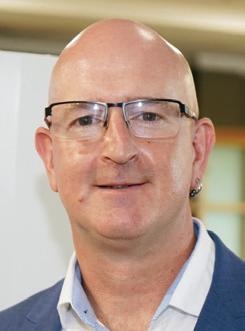
Regulatory changes have removed most commercial noncondensing pressure jet boilers from the market. However, those remaining, that can operate in condensing mode still represent a good option for certain commercial users. Charlie Mowbray, Commercial Product Manager, Ideal Heating
that operate with a pressure jet burner are common in industrial applications but over recent years have been largely removed from the domestic and commercial heating spheres.
Several regulatory changes have been responsible for this, including the Energy related Product (ErP) Directive which placed e iciency requirements on outputs under 400kW; the emission limit value requirements of the Medium Combustion Plant Directive (MCPD) for boilers with thermal inputs exceeding 1MW; and, most recently, the upli to Building Regulations Part L which increased the Gross Seasonal Efficiency of natural gas boilers by two per cent in new buildings to 93 per cent for single boilers with less than 2MW output and to 88 per cent to those with more than 2MW. For oil boilers, the increase is even greater, going from 84 per cent to 93 per cent.
Compliance with Part L is required in new build and existing properties, including where comparatively large extensions are being built, where fixed building services are being modified or installed, or where there is an increase to the capacity of fixed building services. These changes are necessary to reduce emissions and improve overall energy efficiency of the buildings and the systems within. Many pressure jet boilers designed to work in commercial applications have been unable to comply and have been withdrawn from the market. But not all. Those that can be operated in condensing mode are able to achieve the new, more demanding e iciencies and emission limits when matched to a suitable burner.
The term “pressure jet” has become synonymous with large shell and tube boilers where a fanned burner with associated fuel controls is mounted to the combustion chamber. For a pressure jet boiler fuelled with gas this fuel is mixed with air that is blown through the burner by a fan, and ignited at the combustion head of the burner. Burner controls ensure proper fuel / air ratio and mixing across
the range of operation, for e icient and complete combustion.
All commercial pressure jet burners used on gas or oil boilers work in this way, but only those that are fully able to operate in condensing mode are compliant.
Condensing pressure jet boilers feature a double return condensing system (connections for high or low temperature return water) which enables them to keep the temperature di erence between the heat exchanger wall and the return water high, thus maximising the formation of condensation.

In commercial settings, pressure jet boilers are rarely the first option to turn to as high-e iciency condensing boilers can achieve several megawatts. Plus, you have the option to cascade boilers.
The problem with this approach comes when plant room space is limited as cascades can, in some instances, take up quite a large floor area and present challenges installing all the flues and pipework to each boiler. This is where it is worth considering a condensing pressure jet boiler, which can deliver megawatts from a single unit of up to 3000kW.
In association with

https://idealcommercialboilers.com
Due to the high capacity of each individual pressure jet boiler, the system design and installation work for a pressure jet boiler can be considerably less complex in terms of the number of connections and the pipeline that needs to be put in, and the number of pieces of equipment you’ve got to deal with.
In the commercial sector, condensing pressure jet boilers are therefore most frequently suited to sites with large heating loads or where large capacity backup is required to support primary low/zero carbon heat sources. These typically include leisure facilities, hotels, healthcare facilities and the increasingly popular heat networks.
Condensing pressure jet boilers need to be considered carefully as they are not the ‘easy’ option when it comes to commercial heating. Firstly, specialist installers and commissioning engineers are required who have the appropriate training for this type of equipment. The people who operate and maintain them also need suitable training, especially on the health and safety aspects such as Pressure Systems Safety Regulations; these are far more complex than your typical commercial boiler.
A robust water treatment and ongoing maintenance regime is essential to ensure safe and reliable operation. Inadequate water treatment will result in scale and corrosion, reducing the e iciency of the installation and potentially reducing the working life. Furthermore, the condition of the water supply used to initially fill the system can directly impact the quality of the overall heating system, if the water treatment is not correct.
If your site has a high demand for heating and hot water, don’t exclude pressure jet boilers from your considerations. Those that operate in condensing could well provide you with an e icient solution that meets regulatory requirements.
Discover the Bidvest Noonan di erence.
Every day, we help customers get more value from their services, improving e ciency, sustainability, and service quality. With services ranging from cleaning to security, our teams elevate standards for quality and innovation. We recruit talented people, provide them with world-class training, and empower them to excel in their roles. By combining state-of-the-art technology, a data-informed approach and the right people, we transform service solutions to deliver exceptional outcomes. Our commitment to excellence is why customers choose us time and again.
Learn more: bidvestnoonan.co.uk


Nigel Robinson from Service Works Group explains how an integrated tech solution that includes space management software, CAFM and BIM is supporting the FM and estates team
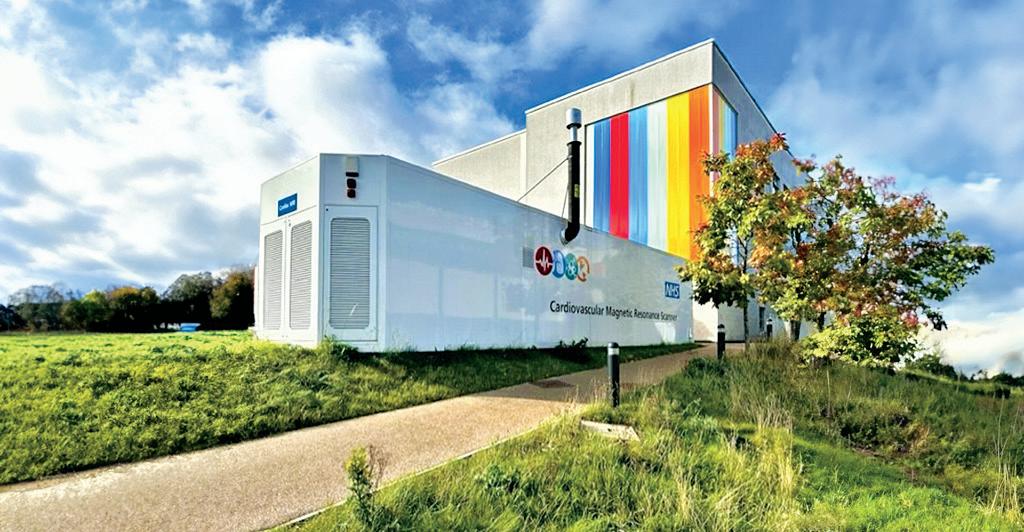
TheKettering General Hospital
NHS Foundation Trust (NHS Kettering) has approximately 560 beds in multiple wards, covering just under 80,000m2, and functions as part of the larger NHS organisation. As one of the older estates, NHS Kettering requires well-managed maintenance routines to ensure optimal levels of patient care. Its estates and facilities team numbers approximately 350 people, including maintenance, housekeeping, medical devices, porterage, and sterile services.
We have supported NHS Kettering since 2019 and provide a range of so ware solutions across the Trust’s estate, including computer-aided facilities management (CAFM) and Building Information Modelling (BIM). The Trust originally partnered with SWG to improve its FM helpdesk provision and planned preventative maintenance (PPM) schedules. Since then, we have continuously expanded the scope to meet the growing needs of the UK NHS sector. Some of the key additions include space management, a mobile application for
field work, and information updates for relevant compliance regulations. This has allowed for better workplace productivity and cost benefits.
The Trust has begun digitising its estate by laser scanning smaller buildings, enabling the estates team to manage its existing building data across multiple sites. Its new state-of-the-art Energy Centre will also use this integration, following its construction.
The creation of a digital twin positions NHS Kettering as a technology leader within NHS England. A digital twin replicates all aspects of the building and its performance, forming a virtual replica of the building’s state in real time.
Not only does that mean the clinical sta function more e iciently, treat more patients, and provide a greater level of service overall, but is an example of best practice for other NHS estate teams.
Compliance standards for NHS estates have become increasingly stringent over the last decade and the Premises Assurance Model (PAM) was introduced
in 2013 to help Trusts make more informed development decisions. PAM has been regularly updated in line with policy changes and user group feedback. As a result, it’s challenging to keep up to date with PAM changes if operating with an older estate.
The so ware is updated in line with relevant governmental guidance and compliance strategies for asset data, which matches the requirements of PAM and can be integrated with the relevant PPM schedules. This ensures that NHS Kettering can produce accurate and correct reporting to the NHS England body.
By having an e ective PPM schedule, hospitals can minimise the potential downtime of assets and drive better cost e iciencies. The so ware has enabled NHS Kettering to align more closely with SFG20 recommendations, increasing the number of PPM events. This allowed the estates team to schedule and allocate resources dynamically and comply with current regulations.
Initially, reactive works totalled approximately 1,500 a month. By analysing and performing repeat works, this has now reduced to less than 1,200 a month. Simultaneously, PPM works have increased from around 1,200 a month to 1,700. The Trust is becoming more proactive, thus reducing time of non-availability and service interruptions. It wasn’t uncommon to force cancellations of clinics or theatre due to estate service failures. The Trust have had no un-
planned / un-manageable interruptions for over 12 months.
A well-managed PPM schedule also helps facilities managers to keep up with other aspects of compliance, such as Health Technical Memoranda (HTM). HTM advises on the design, installation, and operation of specialised CAFM used in the delivery of healthcare. By including HTM guidelines within the schedules, the work of the estates team will always be within the correct parameters set by NHS England.
Gathering building information from the o icial NHS England figures and internal reporting procedures can be time consuming. With QFM, SWG’s CAFM so ware, NHS Kettering can access real-time data. This includes clinical and non-clinical data, space utilisation data, and room availability. Two months a er so ware implementation, NHS Kettering could identify and take steps toward rectifying areas that were causing expensive engineer visits, saving between £2,000 - £4,000 per week.
Using QFM Space data has enabled the Trust to make quicker decisions on space utilisation. Whereas previously the team would have had to visit an area, it now can perform a desktop feasibility and determine suitable areas to accommodate clinical services.
By starting small and developing the scope over time, we have created a building system that caters to the specific needs of a diverse NHS estate.
Says Edward Payne, Chief Engineer at Kettering NHS: “The development journey we have gone on with SWG has been positive from the very start. I cannot urge other NHS Foundation Trust leaders enough to begin their journey with this technology, having transformed the way we work at Kettering General Hospital for the better.”
We are now working with the Trust to integrate housekeeping and portering systems to help the estate teams with their activity scheduling. Once this integration is complete, information about room schedules and maintenance work will be accessible from one central location. As the functionality has scaled up the Trust has achieved greater e iciencies which has substantially increased the ROI.
We offer City & Guilds Assured courses and City & Guilds Qualifications covering all aspects of Mechanical & Electrical engineering and maintenance, including:
High Voltage
Low Voltage
Lifts
Ventilation
Fire Safety
F-Gas Handling
Legionella (Water Hygiene)
Electrical Installations
Confined Spaces & Working at Height
Steam Boiler
Operator
Medical Gas Pipeline Systems
Mechanical & Pressure Systems
Aeronautical Ground
Lighting (AGL)
Facilities Management
Technical Awareness

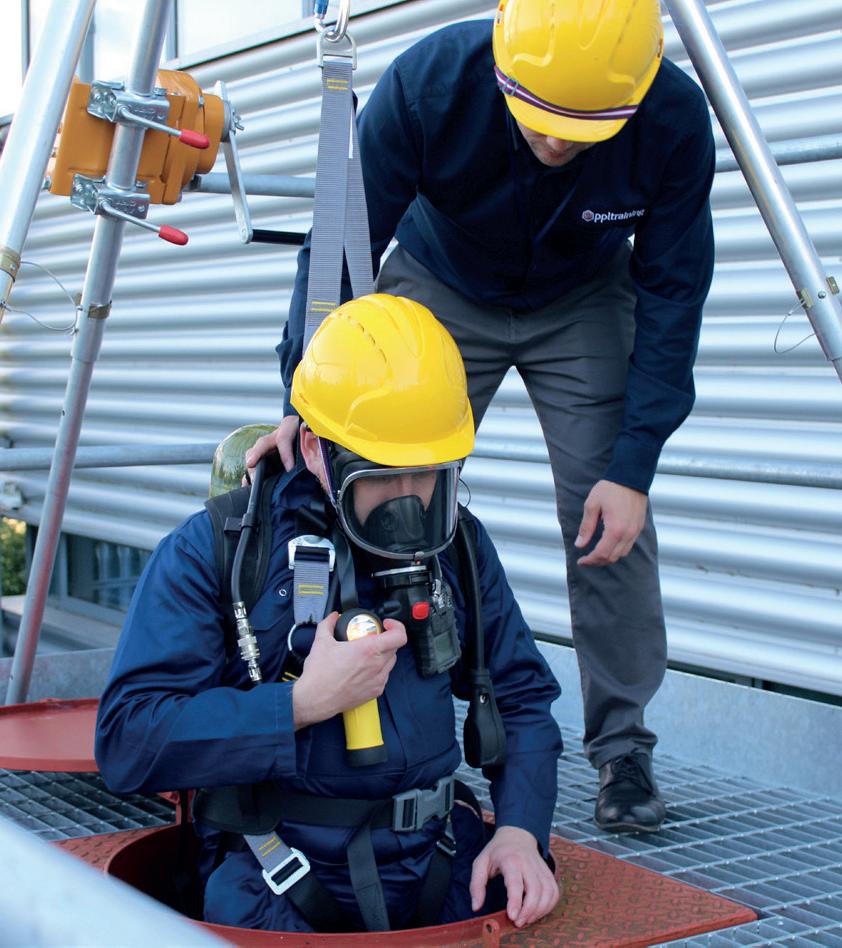
Available in York, Slough, Livingston & On-site at your premises
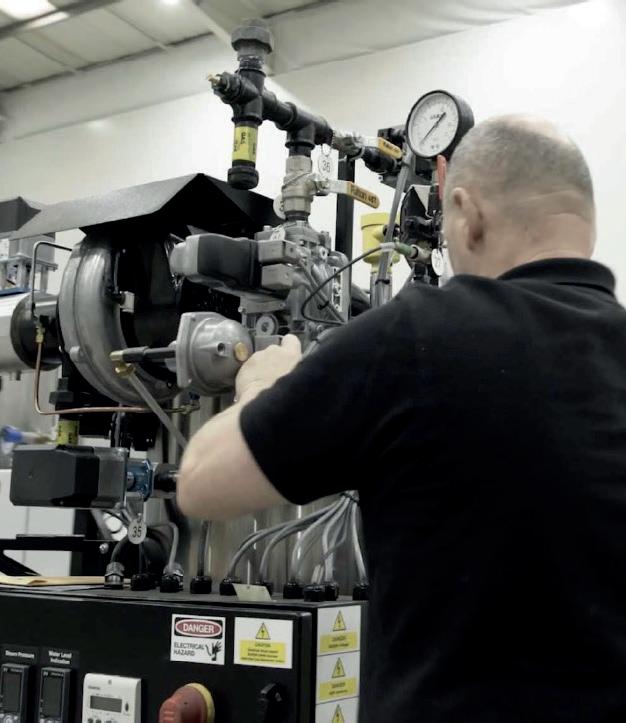
Training for FM Contractors

Nick Blake linkedin.com/in/nickblake-fm
- Great evening of FM procurement focused CPD with the London Branch of CIPS. Thanks to my Gardiner & Theobald LLP colleague Chris Bond and my Institute of Workplace and Facilities Management colleague Daniel Tyler for taking the time to share their knowledge.
IOSH - @IOSH_tweets Friday (5 July) is Action Mesothelioma Day, which aims to make everyone aware of mesothelioma, a fatal asbestos-related cancer. This year’s theme is #GoBlueForMeso! Find out how you can get involved here: https://actionmeso.org/goblue/
The SFMI https://www.linkedin.com/ showcase/the-sfmi/posts/ We hosted a Scope 3 event in collaboration with IWFM. It was our first face-to-face roundtable discussion of the 2024 SFMI programme, and it was great to be back in person once again. We discussed scope 3 emissions in the FM and operational buildings sector, emphasising the tools and skills needed over the next 5 years to support organisations and individuals. Download the framework here: https://lnkd.in/es2NA-tP

RBCC @britishchambers - Two fifths of firms we spoke to currently have a #skills #plan for their staff. We need to get this number much higher, so we can create a workforce fit for the future. Check out our #election #manifesto for more: https://ow.ly/53WL50Sbysm

Kate Gardner linkedin.com/in/kate-gardner35b89526 In a technical world, how your training providers manage that data should also be an important consideration when you are deciding on a training partner. Being shortlisted for Best Ethical Data Initiative at the dataIQ awards recognises all the important work that goes into protecting your data.

CHT @CHTToday TSA and De Montfort University look to set new standard for healthcare laundry wash processes - https:// bit.ly/3zoI0tA
@IWFM_RisingFMs Some fascinating insight on how the @UKLabour would facilitate a “revolution in work readiness” through two weeks’ worth of quality #workexperience for every young person and more than 1,000 new careers advisers. https://bit.ly/45F1qq9
esearch shows that consumers are increasingly concerned about the environmental impact of the products they buy, with a 71 per cent rise in online searches for sustainable goods globally over the last five years. The Union for Ethical BioTrade’s 2022 Biodiversity Barometer indicates that 54 per cent of consumers want information on a product’s biodiversity impact to be listed on packaging.
However, with increased consumer demand for positive action from business, there has also been an increase in greenwashing allegations.
The European Parliament defines greenwashing as “the practice of giving a false impression of the environmental impact or benefits of a product, which can mislead consumers”.
Fear of exposure over greenwashing has seen some companies say nothing at all. ‘Greenhushing’ has emerged as a new phenomenon where companies choose not to publicly disclose their impacts and targets to avoid scrutiny. But being quiet hinders progress and limits opportunities for collaboration. With trust and accountability in mind, companies must prioritise transparency to avoid making generic, exaggerated or unverifiable claims.
Concerns over greenwashing and greenhushing apply to all industries regardless of business activity.
The sector contributes to nature loss in several ways including land conversion and deforestation resulting from upstream activities. Across the value chain, the sector also consumes significant amounts of water and causes land, freshwater and ocean pollution.
More than 90 per cent of the impact of the consumer goods sector on nature comes from its supply chains, so household and personal care manufacturers have an important role to play in procurement and product design.
While half of the world’s biggest companies have net zero targets, many do not fully understand the impacts and dependencies of their activities on nature, with only five per cent of Fortune Global 500 companies having specific targets.
To avoid greenwashing and greenhushing, businesses – need to accurately assess their impacts and dependencies on nature, set measurable and time-bound targets, take ambitious actions to transform their operations, and report against progress regularly.
The World Economic Forum, in collaboration with Oliver Wyman, has developed guidance showcasing how the household and personal

care products sector can take action to transform their practices and value chains. ‘Nature Positive: Role of the Household and Personal Care Products Sector’ outlines five priority actions that corporations need to take to ensure the sector plays its part in halting and reversing nature loss by 2030. These are:
» Improve water stewardship throughout the value chain.
» Source responsibly and replace feedstocks with sustainable bio-based or other renewable materials with careful analysis on trade-o s.
» Change customer behaviour on product use and disposal through education and transparency.
» Support nature conservation and restoration through investment in responsible business practices and nature-based solutions (NbS).
» Expand circularity, o er sustainable products and packaging and engage in collective action and policy advocacy.
The guidance also outlines the most significant impacts and dependencies of the sector on nature, highlighting resources that companies can use to monitor supply chain risks and compliance and certification standards.
Progress is promising, but companies must accelerate to achieve the collective goal of a nature-positive world for all by 2030 – the mission at the heart of the UN Biodiversity Plan. Businesses must therefore complement their net zero plans with a credible nature strategy. Business for Nature’s Nature Strategy Handbook, o ers businesses a step-by-step guide to develop this strategy in line with its Now for Nature global campaign, which urges all businesses to act on nature and contribute towards a nature-positive world by 2030.
By working together, organisations can act now to shape an industry that helps secure a naturepositive world.
























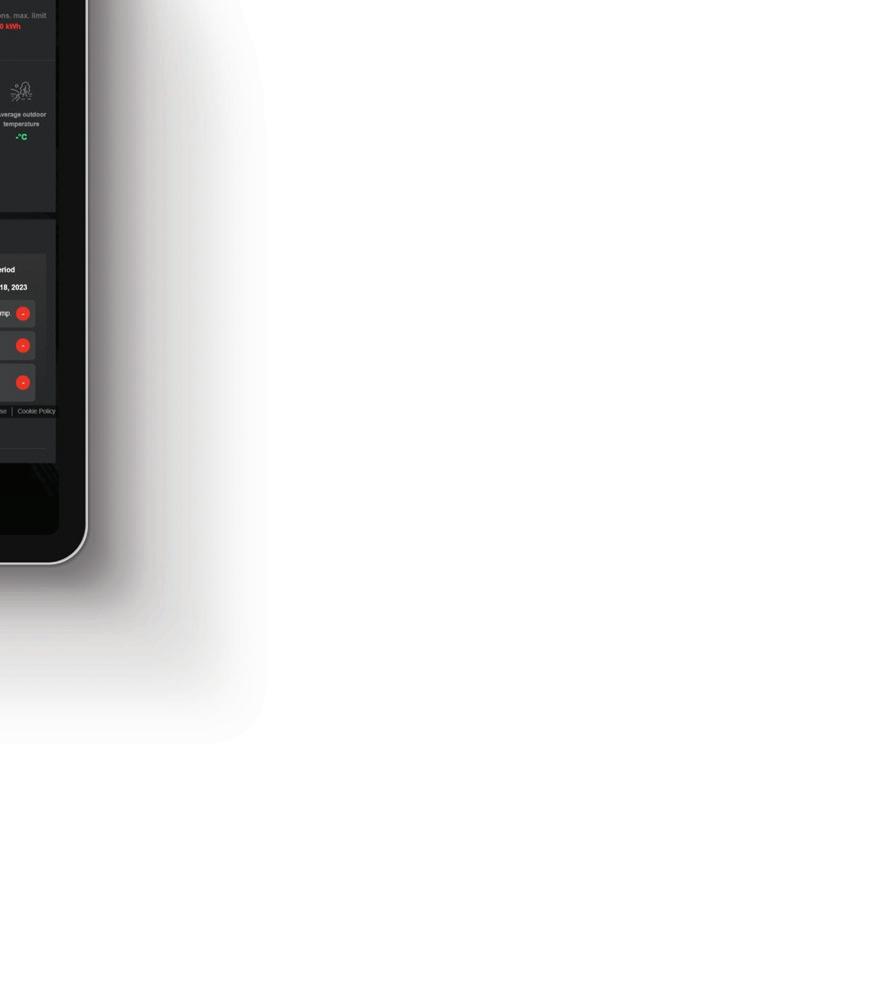

Today, we all have access to controls to make everyday life easier and more comfortable. The same applies to HVAC systems where modern controls are not only vital for ensuring the right levels of occupant comfort but also help deliver low carbon buildings that operate effectively and efficiently.
The energy dashboard within MELCloud Commercial allows Facility Managers to remotely manage, monitor and control HVAC systems in multiple buildings from one central location.
• Real time energy consumption data to enable improved energy management
• Predictive and preventative maintenance to reduce HVAC downtime, thanks to remote diagnosis
• A choice of subscription packages tailored to best match your requirements and manage costs.
Revolutionise your estate management with MELCloud Commercial, find out more by scanning the QR code below.




The Competition and Markets Authority (CMA) has warned of ‘questionable’ net zero carbon claims within the built environment, while in a recent survey ‘Greenwashing – what’s true, what’s not, and does it matter?’ almost 90 per cent of respondents believe it to be a problem. From o setting to misleading ‘eco-friendly’ claims, greenwashing comes in many forms, so what can FMs do to avoid it undermining their sustainability goals?
Achievements need to be made public for full disclosure and accountability to your customers.
Next the claim should not lock in small incremental reductions but set your business on a downward emissions pathway. To play its part in keeping the climate within relatively safe levels, The UK has committed to its sixth carbon budget emissions aimed at greenhouse gas emissions reduction of 78 per cent by 2035, and onward to deliver net zero emissions over the 2040s. The legislation will increasingly tighten across all sectors to comply with this imperative. Therefore, companies should not be looking to just to tweak emissions short term, but to set up for the much bigger changes to come.
In FMJ's regular monthly column, our team of FM experts answer your questions about the world of facilities management
ALISON DOIG, SENIOR ADVISOR, RECOURSE*
I am not in the building or facilities management trade, but a er 30 years’ experience working on climate and energy policy, and I can spot a bogus low-carbon or green claim a mile o .
Greenwashing, or exaggerating your green credentials, will do nothing to make your business front runner in the innovative technology that is increasingly expected, such as air source heat pumps or passive cooling designs; or good practice approaches of the future, including using a renewable electricity provider and e ective energy demand-side management. Dubious and unaccountable ‘green’ claims for your business will cost your customers as they try to keep up with electricity, heating, and cooling costs in your poor-e iciency buildings. And it will do nothing to help the climate, as UK summer temperatures soar and winters get wetter, impacting your properties’ fitness for purpose.



Alison Doig

Finally, carbon o setting is not a substitute to real world emissions reduction. The highly murky world of voluntary carbon credits wants you to believe that if you save trees in Africa, then you can release copious emissions in the UK with a guilt-free conscious. I would encourage you in your green and ESG practice to give to reputable conservation projects, but don’t pretend for a minute that this is a substitute for good emissions reduction in your own facilities.
So don’t fool yourself that you can claim ‘green’ while painting on the greenwash. But recognise that the right thing to do for the climate will be the right thing for your business, your customers and the planet. Be proud to take real climate actions, and be honest in your green claims and ambition.
*https://re-course.org/
CHARLIE MARTIN, CO-FOUNDER OF THE ANTIGREENWASH CHARTER
The built environment sector is at a critical juncture. The Competition and Markets Authority (CMA) recently flagged “questionable” net zero carbon claims, raising alarms about greenwashing practices that could derail genuine sustainability e orts. A recent survey, 'Greenwashing – what’s true, what’s not, and does it matter?', underscores this concern, revealing that nearly 90 per cent of respondents recognise greenwashing as a significant problem.
There are three criteria for good climate targets and green credentials.
First, they have to be science based and make measurable, real world carbon reductions. The gold standard is the Science Based Targets Initiative (SBTi), that sets out clear guidance on setting, monitoring, and delivering credible climate targets.
Greenwashing takes many forms, from dubious o setting schemes to misleading “eco-friendly” labels. It’s a pervasive issue that undermines the credibility of genuine sustainability initiatives. For facilities managers, navigating this landscape is crucial to maintaining both ethical standards and achieving authentic environmental goals.
The survey conducted by Futurebuild and The AntiGreenwash Charter highlights the extensive impact of greenwashing within the industry. The findings show that:
• 88 per cent of respondents believe greenwashing is problematic.
• 81 per cent view it as dishonest, 72 per cent as unethical, and 43 per cent as cost-driven.
These perceptions illustrate how greenwashing not only erodes trust but also hampers real progress towards sustainability.
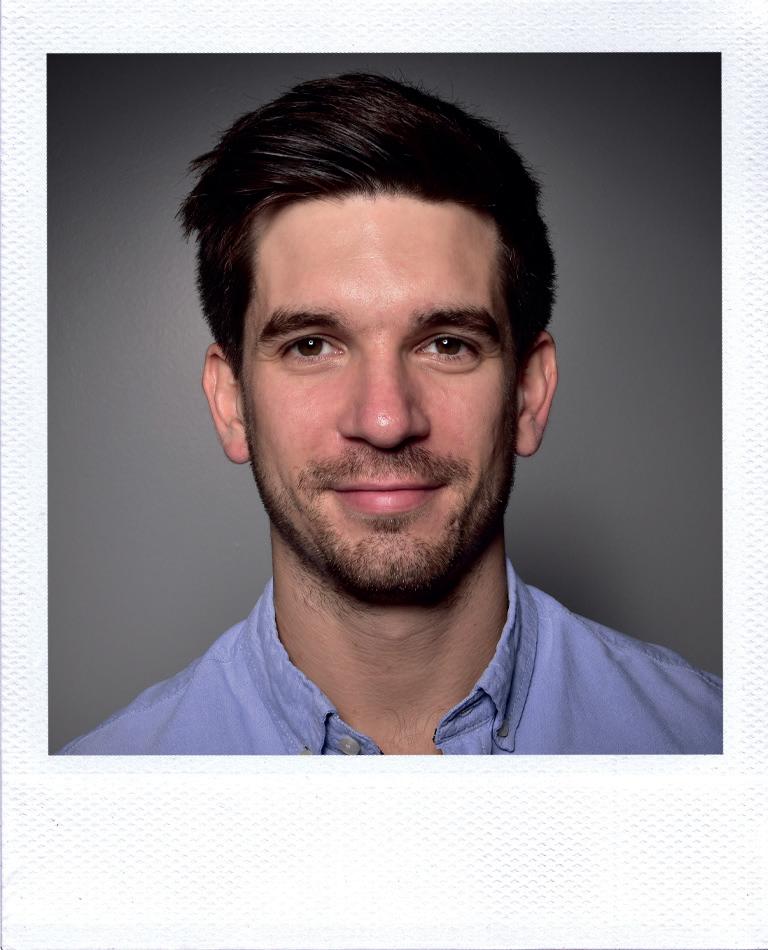



marketing and transparency. Signatories are monitored to ensure adherence to ethical standards, enhancing their reputation and credibility.
The fight against greenwashing is critical for the integrity of the built environment sector. As an industry, we must strive for transparency and accountability. By implementing robust verification practices and engaging with initiatives like The AntiGreenwash Charter, FMs can lead the way in fostering a genuinely sustainable future.
The path to net zero is fraught with challenges, but by confronting greenwashing head-on, we can ensure that our sustainability e orts are both genuine and impactful. It’s not just about meeting targets but about creating a built environment that truly supports the health of our planet and its people.
For more insights and strategies on combating greenwashing, visit The Anti-Greenwash Charter and join us in making a meaningful di erence.



Examples abound where companies have made grandiose claims of being “carbon neutral” or “eco- friendly” without the evidence to back it up. These false claims o en lead to significant reputational damage when the truth comes to light, causing loss of customer trust, legal challenges, and financial penalties.


severe repercussions, including the loss of
In many instances, firms have marketed new building materials as “sustainable” only for independent testing to reveal that these products do not meet the proclaimed environmental standards. This type of misinformation can have severe repercussions, including the loss of contracts and strained business relationships.

CharlieMartin

To avoid falling into the greenwashing trap, FMs must adopt rigorous, transparent practices. Here are key strategies:
Demand Evidence: Ensure that all sustainability claims are backed by credible evidence. Utilise Environmental Product Declarations (EPDs) and Life Cycle Assessments (LCAs) to verify claims. According to the survey, 46 per cent of respondents already use LCAs to validate sustainability.
Develop Internal Standards: Establish and adhere to internal sustainability standards. Nearly 40 per cent of survey participants have created their own standards to hold supply chain partners accountable.
Engage Independent Consultants: Employ independent sustainability consultants to audit and verify claims. This practice not only enhances credibility but also provides an unbiased perspective on sustainability practices.
Implement a Green Claims Policy: Adopting a verified Green Claims Policy can significantly reduce the risk of greenwashing. Such policies ensure that all claims are transparent and backed by solid evidence, fostering trust among stakeholders.
Sign Up for The Anti-Greenwash Charter: Joining The AntiGreenwash Charter signals a commitment to responsible

• Futurebuild and The Anti-Greenwash Charter. “Greenwashing – what’s true, what’s not, and does it matter?” Survey Report, August 2023.

August 2023.
Examples abound where companies have made grandiose claims of being “carbon neutral” or “eco- friendly” without the evidence to back it up. These false claims often lead to significant reputational damage when the truth comes to light, causing loss of customer trust, legal challenges, and financial penalties.”





KATRINA CHRISTOPOULOS, HEAD OF ESG AT CLOUD

Let’s be clear, there is no room for greenwashing in the middle of a climate crisis. When companies engage in greenwashing, it distracts from and devalues the e orts of businesses that are genuinely committed to sustainable practices.


buildings. It’s hard to overestimate the impact that




According to the Climate Group, 40 per cent of global greenhouse gas emissions come from buildings. It’s hard to overestimate the impact that the FM sector can have on accelerating net zero.

Greenwashing can create fear that can deter companies from taking action.




Transparency enables companies to make a start by embedding ESG goals in their culture and values. Begin with understanding what you're measuring and why. The strategy can flex over time around issues, but the goal should remain the same. An evidence-led approach to sustainability plans ensures that the activity is not just tokenism.
Evidence also helps companies to demonstrate their environmental commitments are considered and e ective. Where possible, these claims should be externally validated as it helps build confidence. At the very least, FM companies should assess their programs as if they were going to externally validate them to understand if they would make the cut.
Proper initiatives are crucial. Sustainability goals should be
challenging, especially over the long term. The ESG challenges facing us all are immediate and significant, so it is important not to be too safe with goal setting. There needs to be a strategic approach, with ideas on how goals will be met and what budget is required. Using data is key to informing planning, measuring a baseline, and putting in place initiatives that show how reductions can be made.
Cloud has already achieved scope 1 and 2 carbon emission goals. However, scope 3 requires a closer understanding of the carbon emissions of the supply chain.
Scope 3 is a big task that requires immediate action. It starts with understanding supply chain emissions and working on initiatives to support them to decarbonise. Cloud’s Freedom platform has proven invaluable in assigning local engineers to jobs and is currently being upgraded to collect per-task carbon emissions. The data it provides also allows for more e icient route scheduling to minimise mileage.
Fresh investment in advanced telematics is improving driver e iciency, and fleets are moving to electric vehicles or sustainable fuels. All these items have a plan and budget behind them, and the role of each is understood in the overall carbon reduction target. Celebrating genuine progress and e orts is important, even if companies are not yet perfect. This can motivate continued improvement. By providing an environment that balances accountability with encouragement and support, companies can be motivated to take genuine and sustained action towards their sustainability goals.
The FM industry is in this together and will be much more powerful and successful if it collaborates to set common standards and share best practices. A collective approach can reduce the pressure on individual companies and foster a supportive environment for sustainable action that avoids greenwashing.
MITAKSHI SIRSI, DIRECTOR OF SUSTAINABILITY, BROADWAY MALYAN AND WILLIAM POOLE-WILSON, FOUNDER AND MANAGING DIRECTOR, WILL+PARTNERS
In the labyrinthine world of modern architecture, the refurbishment of buildings emerges as a pivotal axis, promising a bridge between our historical inheritance and a greener future. But is this noble quest overshadowed by the spectre of greenwashing?
energy-e icient and solarpanelled facades, while in the core, the building may retain outdated, ine icient systems. A classic case is insulating an old building to claim reduced thermal loss, while neglecting to upgrade the HVAC systems, leading to ine iciencies. The facade remains just that — a facade, with the workings failing the test of true sustainability.



The pertinent question arises: have we got the answers right? We tend to use the term greenwashing a bit too loosely in the building sector. The term refers to false and misleading claims, selective information disclosure and token initiatives. This may be straightforward in the manufacturing of, let’s say, a pencil; but decision making in the building industry can be complex. When the intent is noble, can lack of skill be categorised as greenwashing?

The answer may lie in our commitment to authenticity and rigor. We need thorough energy audits, overhauls of mechanical systems, and genuine material innovations. Refurbishments should be scrutinised for lifecycle impacts, encompassing both embodied carbon & energy in structures and the e iciencies facilitated by the refurbishment. It also lies in recognising where this cannot be achieved – tall buildings, for example. The cost of refurbishing tall buildings means it might be pointless to repurpose to residential use cases.
What is needed is a systemic change in the way we do things in the AEC (Architecture, Engineering, and Construction) industry, but that requires a concerted e ort from everyone involved! Heritage is an important aspect, but are we preserving for aesthetic record, or for posterity? And if so, do we need to overhaul the approach to conservation of historic buildings? These are di icult questions we need to ask and answer soon.




Refurbishment is architecture’s answer to the broader call of sustainability. Unlike the brute force of demolition, refurbishment respects the past and melds it with the aspirations of the future. It speaks to our need to conserve energy, reduce waste, and leverage available resources, contributing less to landfills and more to the soul of the edifice. But there also lurks greenwashing — a practice where entities feign eco-friendliness more fervently than they pursue it.
Does this suggest the refurbishment of buildings is greenwashing? Exploiting the intent of sustainability, dressing up minimal e orts in the garb of green credentials? Not necessarily, but greenwashing is problematic in the refurbishment sector. Developers might tout
However, the industry is evolving - adaptive reuse projects serve as exemplars. These projects also showcase the potential of closed-loop systems, but we need move faster and convert the exemplars to the unexceptional.
Certifications such as LEED, BREEAM o er frameworks not just for compliance, but for leadership in sustainability. This commitment NEEDS to go beyond checklists. Regulations have a place in all of this, but only to a certain extent and taking care that they don’t curb innovation or foster mediocrity for the sake of compliance.
To ensure the validity of refurbishment criteria - precise measurement and verification are indispensable. Post-occupancy evaluations serve as reality checks against projected benefits, illuminating discrepancies and guiding future improvements. This continuous feedback loop ensures that refurbishment projects deliver on their sustainability promises. In sum, we must embrace genuine transparency, step beyond aesthetics, and adhere to rigorous standards. We can then say that we have “got the answers right”, thereby honouring our past and changing aspiration to a reality we actively shape.
Do you have a question that you’d like answered by the FMJ Clinic?
Email: sara.bean@kpmmedia.co.uk






















































Only 10% of the running costs of traditional AC




Ventilation based evaporative cooling Targeted spot or blanket cooling

















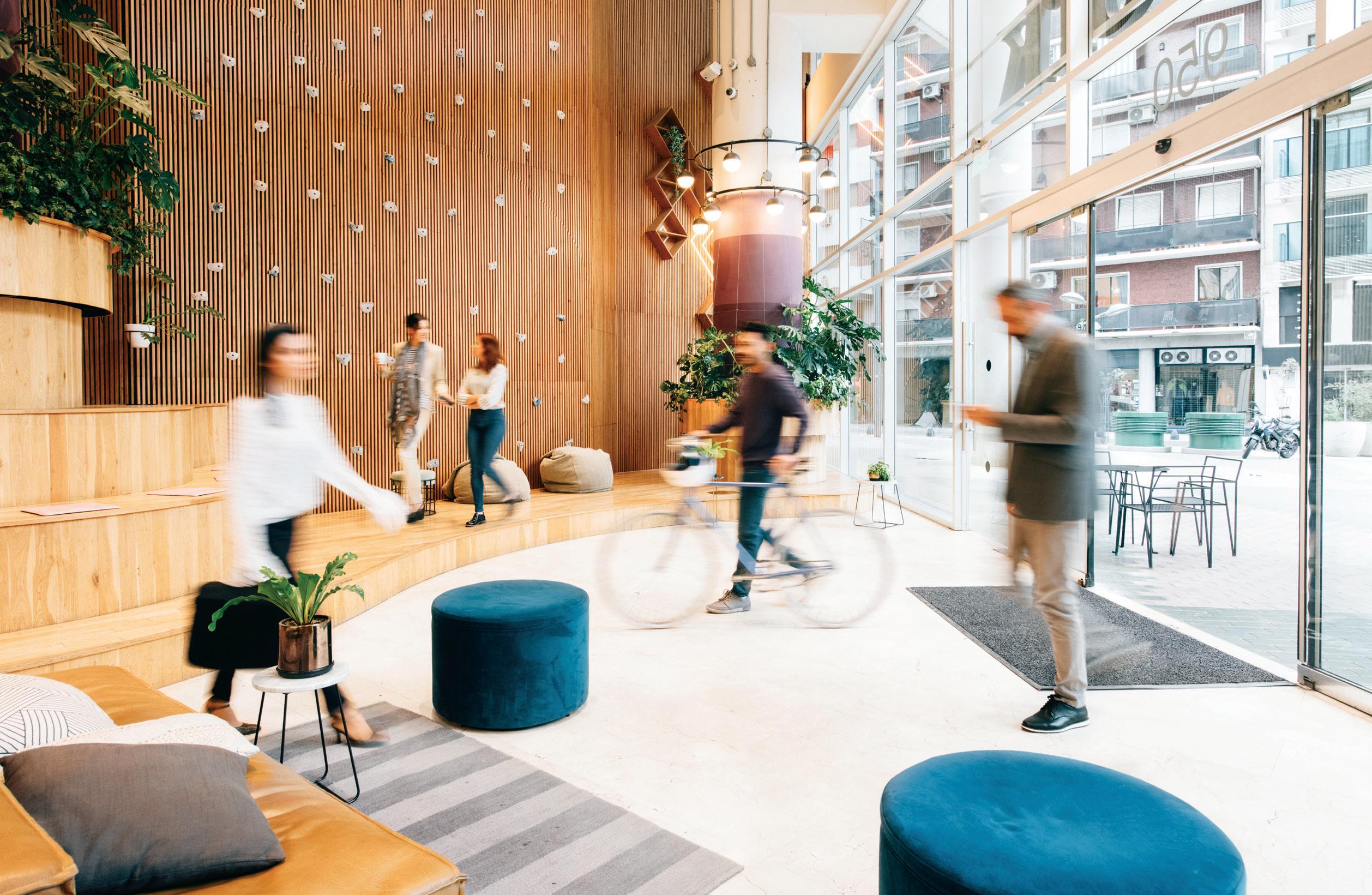
We recently held a roundtable discussion under Chatham House rules, where members of the FMJ Editorial Steering Committee, representing both public and private sector organisations, discussed the big issues impacting in-house FMs
FMJ Editorial Steering Committee is made up of the client side FMs drawn from a range of sectors. The panel who came together for this discussion, represent a range of sectors, including legal, science, public sector and commercial. During the debate a range of topics were covered, including hybrid working patterns, the impact of tech on FM, recruitment challenges and managing costs. However, as the group acknowledged, their key driver remains supporting sustainable goals that aim to protect people, property and planet.
HYBRID CONUNDRUM
We kicked o the session on the continued impact hybrid working is having on the way
workplaces are managed. As one participant remarked: “The overlap between the virtual environment and the physical environment shocked everyone during the pandemic, in particular the extent to which organisations could continue to function. It led to inevitable conversations around patterns of attendance in the post pandemic world.”
This has resulted in a reappraisal of what the workplace is for, which is not to sit at an o ice desk for eight hours a day but to embrace the surroundings as a place to exchange, to innovate, to brainstorm and to socialise. And it all comes back to the quality of the facilities.
A contributor described how sta want to be able to replicate their home set up. So, rather than just focusing on creating more collaborative spaces, there is a need to provide occupants with
the kind of environment they’ve grown used to at home. “They want the ability to do their focus work, but they also want access to collaborative spaces. I think where the magic really comes is in making these spaces dual purpose, so you’re not fitting out lots of space for a particular purpose, if it’s only going to be used once a week or once a month.”
Workplaces are seeing a greater provision of team event spaces. Said a speaker: “A lot of what we’re looking at now is spaces to hold team events as well as standard meetings. I think the o ice space pre-COVID was primarily about desk-space, whereas now there are more themed areas. You’ve got your structured spaces, you’ve got your collaboration spaces, and you’ve got your event spaces as well.”
While all of the panel were looking at

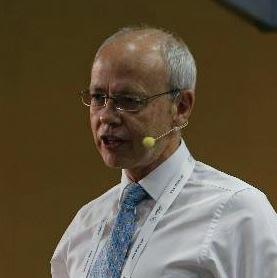
SARA BEAN EDITOR, CHAIR, FACILITIES MANAGEMENT JOURNAL

PAUL CANNOCK, HEAD OF THE ESTATES AND FM DEPARTMENT, EUROPEAN SPACE AGENCY
opportunities to revise their breakout spaces and introduce quiet working zones, in response, the furniture industry seems to have embraced the idea of providing individual workstations or ‘nooks’.
Commented a panellist: “As occupants are willing to come back to the o ice - they want an alternative space from the desk, and talking to the furniture companies they are telling me that they’re not selling many desks but they’re selling lots of ‘nooks’.”
But what can employers do when dealing with sta who want to retain a fixed desk in the o ice despite working a third of the time at home? This is where a change management approach is essential to establish new ways of occupying space more e ectively and e icient. Said a contributor: “We have to bring them along on the journey so I’m using pilot teams to demonstrate it can work. We’ll go through the pain, and we’ll test and we’ll learn. If it doesn’t work, then we’ll change it. Also, one of the things I’ve avoided doing is trying to answer everybody’s concerns right at the beginning. For instance, we’re not going to begin with a desk booking system, but if we find that we need it, then I’ve got one lined up.”
It was agreed that when it comes to managing the hybrid working estates, now more than ever for FMs, it’s a case of quality over quantity to help attract and retain talent.
The challenge of finding, recruiting and skilling up the right people in the FM sector is increasingly pressing. According to the most recent RICS UK Facilities Management Survey, three-quarters of participants in the report were encountering di iculties when sourcing workers for building operation and maintenance roles. This was reflected in our discussion, where concerns were raised about shortages of in-house roles for facility management practitioners.
ALAN HUTCHINSON, FACILITIES DIRECTOR, HOWARD KENNEDY LLP

RUSSELL BURNABY, HEAD OF FM, REGENERATION AND ENVIRONMENT, BRENT COUNCIL
Said a contributor: “I think there’s a lot of fantastic individuals in the industry, but they’re being held really tightly by their current employers, and it’s really di icult to find good talent at that sort of level.”
He added: “There has also been a change in work appetite. People just don’t want to come into the o ice three days a week. You see happening in the wider working world but I find that quite surprising, when from an FM operations perspective there’s resistance from that area.”
Instead, one of our panellists is seeing some positive results in bringing interns in on a very junior basis, who are willing to learn and embrace the opportunities for development support, “because we just can’t a ord to lose these individuals and be confident that we can fill their roles and with the same standard of candidate”.
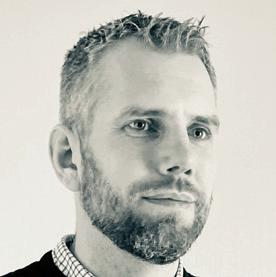

DARREN MILLER, GROUP HEAD OF REAL ESTATE & WORKPLACE, EXPERIAN
WAYNE YOUNG, FACILITIES MANAGER AT DB CARGO UK
attracting candidates. The panel also agreed that when you consider how important it is for the built environment to help reduce emissions, it is a great motivating factor to get the incoming cohort of workers interested in joining a sector where they could directly help to make a di erence.
I think there’s a lot of fantastic individuals in the industry, but they’re being held really tightly by their current employers, and it’s really di cult to find good talent at that sort of level. There has also been a change in work appetite. People just don’t want to come into the o ce three days a week...”
In late 2022, a research paper by the Civil Engineering Research and Innovation for Sustainability Institute in Lisbon, Portugal, found that during the operations and maintenance stage, facilities managers were faced with data from various sources, much of which went uncollected and unprocessed. Our FMs all agreed that this picture is changing fast. AI is increasingly being adopted to work with smart buildings, technology and sensors. In this way a fault in a building asset can be identified which automatically leads to a fix. The results said a participant will be to: “Create better intelligence around
Another of our senior FMs admitted to struggling in all areas of recruitment and believes the recruitment/retention challenge is “worse than it’s ever been” which is a real worry. The panel concurred that part of the issue remains that people still don’t necessarily set out to work in FM in the first place, and that, when compounded with recruiting for a presence-based role in the current world of hybrid work, represents another challenge. However, on a more positive note, is the FM sector’s key remit in supporting a sustainability strategy. This is taken exceptionally seriously by the younger generation who want to know their potential employer’s sustainability policies, which could become a key delineator in


our buildings and ensure much smarter working processes so that that FM’s can be a bit more ‘light touch’ on those day-to-day jobs of checking systems. If technology can take over that piece - we can start getting into probably the more strategic elements of our work in terms of energy e iciencies, and using the data to drive meaningful actions.”
Other suggestions for the use of digital technology amongst our panel was the use of elements such as access control data and to help drive decision making in areas such as the use of space and the overall size of the estate. As one commentator said: “it also helps inform the change process as it’s di icult for stakeholders to argue with evidence-based data”.
An area of concern amongst the panel is that across all the sectors, whether private or public sector there is now a glut of building data available. As one FM asked: “Do I have the resources to determine what to do with that data?” The solution it was suggested, is to focus on key metrics, and unsurprisingly, our panellists are finding that data o ers a tremendous amount of help in measuring and reporting on carbon use to help meet sustainability targets.
All these digital developments come with a proviso that recognise the speed new tech resources. One of our panellist’s
working to those targets and then of







focused on building a really to continue to complement that
organisation is concentrating instead on “getting the basics right”, This includes selecting the right helpdesk so ware, and installing an e icient BMS to ensure the core fundamentals are in place. He said: “We try working to those targets and then looking at opportunities where we can automate some of our operations a erwards.” He continued: “What’s really interesting is seeing this common occurrence where people are jumping to the latest fad that don’t have foundations in place, spending an awful lot of money, and not getting the benefit. Instead, we’re very much focused on building a really strong foundation and looking to continue to complement that with evolving technology.”


more positive level, one reflected: “I also think more of a drive for us is to look how we can save costs that brings more money into our budget. For example, I’m looking at quite heavily at the moment about what I can do to reduce contract costs, which then in turn, increase the level of my budget overall.”

Given the post-pandemic rise of hybrid working, compounded with the cost of living and energy crisis’, our panel agreed that budgets have been challenging. But, on a

What’s really interesting is seeing this common occurrence where people are jumping to the latest fad that don’t have foundations in place, spending an awful lot of money, and not getting the benefit. Instead, we’re very much focused on building a really strong foundation and looking to continue to complement that with evolving technology.”



Importantly, given the energy targets, one of our panel noted they are under as much pressure to hit GHG (Green House Gas) percentages as to hit budgetary percentages. However the panel concurred these go together. And if sustainability and e iciency go hand in hand, reducing the estates footprint is a large part







go hand in hand, reducing the of this.

Finally, it was agreed, if you’re an FM practitioner you’ll continue to hear a lot about ESG, but it is really just the latest acronym that describes meeting sustainability targets, supporting societal endeavours and achieving compliance. Ultimately, the panel concluded this shows the considerable role for facilities managers in helping to save the planet.





With hybrid working patterns now firmly embedded into the workplace culture, front of house increasingly uses digital solutions to help meet fluctuating demands, but can this still provide a human touch in the guest experience? Sara Bean reports




Fouryears on from the pandemic a recent survey from JLL confirmed that hybrid working is now the most common workstyle globally, with 87 per cent of organisations supporting hybrid work patterns. JLL’s Global Occupancy Planning Benchmarking Report reveals the wider impact of this revolution in workplace working patterns is not only influencing occupancy planning and workplace design, but is also resulting in the adoption of new technologies that help support changing workplace requirements.
So how have front of house services evolved to manage fluctuating working patterns – where we can no longer assume a traditional 9 -5, five day a week culture and how can technology help? According to Bianca Angelico, Director and Chief DayMaker at On Verve it all hinges on the ways in which front of house providers deploy their people.
“We have adapted our rotas, as we know Friday is predominately low occupancy and Tuesday – Thursday is high occupancy. We have shorter days on Friday and longer days on the peak days which the team loves as they either get to come to work later or leave earlier on Friday. This has been well received by our team and clients.”
Oliver Hiner, Director of Operations at Portico takes a similar view, revealing that sta are trained to handle peak times and remote support. Flexible sta ing models, including part-time and ondemand employees, ensure coverage during varying hours.
He adds: “The role of guest services specialists has also evolved to include placemaking and community managers, as o ices are shaping to become places for creativity and collaboration.”
that really stands out is in the digitisation of visitor registration.
“It’s like giving the check-in process a turbo boost, making it super smooth for guests,” she says. “It’s not just about speeding up check-ins; it can revolutionise the guest experience. By going digital, clients can unlock real-time data and analytics, providing invaluable insights. Collecting information on visitor frequency and peak visiting hours allows clients to optimise resource allocation, make changes to security measures, and enhance the overall visitor experience.
“Taking this data which mainly explains what is happening, we are looking to use AI to help us understand the why. This will help us support our clients better and give them a true return of experience when discussing at board level.”
Hiner reveals that Portico has invested in numerous customer-facing technologies that are helping to automate the visitor experience, which includes selfservice kiosks, digital sign-in tablets, and mobile apps for pre-registration and check-ins.
“An example is at one of our client sites, 20 Fenchurch Street” he says. “Previously, occupiers used a traditional guest management system, and o en struggled to register guests on time.
Employees working from home should be able to schedule a meeting room or report a problem through an app, chat or video call, just as easily as someone in the o ce can visit the reception desk. It’s all about keeping the wheels turning smoothly and everyone connected, no matter where they’re logging in from.”
Interestingly, according to Angelico, the very concept of ‘front of house’ extends to supporting employees where ever they’re based, whether in the o ice or at home.
She says: “Employees working from home should be able to schedule a meeting room or report a problem through an app, chat or video call, just as easily as someone in the o ice can visit the reception desk. It’s all about keeping the wheels turning smoothly and everyone connected, no matter where they’re logging in from.”
The increased adoption of digital solutions is reflected in the findings of the JLL report, which explains that many organisations have invested in technology to enable the adaptation of their physical spaces to better support hybrid working, with 43 per cent implementing IT modifications for hybrid working and using technology to inform how to best use their space.
For Angelico at On Verve the technical solution
“Portico were a key part of the planning, rollout, and embedding of an innovative guest management system and accompanying events via the Equiem app. The app promotes a seamless way to welcome occupiers and visitors into the building and facilitates a seamless experience into the o ice. The technology also allows us to track and share visit statistics, providing occupiers with detailed insights on o ice visits.”

Balancing the use of tech with the deployment of customer facing sta is an important consideration given the shi in working practices. Earlier this year the Institute for Public Policy Research (IPPR) issued a report which warned almost eight million UK jobs could be lost to artificial intelligence in a ‘jobs apocalypse’.











Stefano Bensi, General Manager at So Bank Robotics EMEA, which specialises in collaborative robots for the hospitality industry, agrees that while IT, E-commerce and other technological solutions are being introduced at speed in front of house operations, they can be viewed as an aide, not a substitute for human interaction.

“With many organisations still doing their best to entice people back to the o ice, the employee or guest experience needs to be as good as it can be. Introducing



automation in the form of robotics will free facilities sta to focus on areas that truly enhance the guest experience or add value to the client overall.
“Facilities management professionals understand well the benefits of crossskilling sta . This is based on the belief that everyone in the broader facilities team can contribute positively to the employee or guest experience.”
Hiner of Portico agrees with this observation, arguing that it is the combination of cutting-edge technology with human-centred traditional reception services that is o ering an innovative model for reception services and one which brings with it a huge number of benefits.
He explains: “The synergy of the two creates exceptional customer service. The technology automates routine tasks, freeing people up to focus on the human elements of the workplace - in this case, providing a first-class customer experience.
“The addition of the community events and o ers page [on the app] which features event details, exclusive o ers, and building news - fosters a sense of community, encouraging tenant engagement and interaction. Portico also collaborates with local businesses to populate the Equiem app’s events and information section, securing discounts for tenants at restaurants, hairdressers, food markets, and gyms.”
Meet and greet however, isn’t the only part of the digital arsenal, with new solutions, particularly in data analysis increasingly
However she also believes that it’s the interaction between the front of house team and the tech which is the essential conduit between people and place.
“Front of house are the eyes and ears of our clients, providing essential insights from the ground level. While automated systems are helpful, nothing can replace the value of personal, face-to-face feedback - it’s like a secret handshake that builds trust and connection like nothing else.”
According to Bensi access to all this data now enables organisations to benchmark the quality and consistency of their services. The most obvious is by equipping a building with sensors to help measure data on things such as occupancy and footfall, especially important in a hybrid working environment because it allows you to adjust services in line with these metrics.
“In practice,” he says, “this capability means you can turn up services on busy days, or in busy areas, to enhance the guest experience, or turn them down to be more e icient during the quieter moments.”


being used to help enhance the guest experience. Another JLL’ report Is hybrid really working? found that 60 per cent of organisations are aiming to improve the employee experience and support changed workstyles (59 per cent), and significantly, this resulted in an increase in the employment of occupancy/ vacancy data and density data. As workplace planning and management becomes more complex, accurate data and new technologies will not only serve as a crucial guide to digitising buildings but enable a more holistic approach to the occupant experience.

vacancy data and density










“Imagine having a magic mirror that reveals the secrets behind guest experiences in real time,” enthuses Angelico.
“That’s what real time feedback does for us, it’s like peering into the ‘why’ behind every guest interaction. Through automated systems, we can swi ly analyse guest feedback, identifying trends and issues for resolution and continuous improvement of our services. These systems can also analyse guest preferences and behaviours, helping us to deliver personalised recommendations for services and activities tailored to peoples’ interests.”
For Hiner at Portico: “Front of house services have adapted to flexible working patterns by implementing technologydriven solutions and dynamic scheduling. Enhanced communication tools and remote access systems allow seamless coordination between on-site and o -site teams. These innovations ensure e icient, personalised service despite non-traditional working


hours.”

Front of house are the eyes and ears of our clients, providing essential insights from the ground level. While automated systems are helpful, nothing can replace the value of personal, face-to-face feedback - it’s like a secret handshake that builds trust and connection like nothing else.”



The question remains however, that with the increasing use of automation, will front of house providers be able to continue to deliver a personal touch?







Angelico is confident that harnessing data and AI will help front of house providers o er guests an even more personalised experience by gathering preferences and using this to enhance their experience.

She says: “Nowadays, many of us rely on apps to reserve desk spaces and let’s face it, we’re creatures of habit. We have our favourite spots — whether it’s the desk by the window or close to the air conditioning. So, just imagine if your go-to desk isn’t available. What if the app could suggest a similar desk, perhaps one with a similar view or distance to the kitchen? This has the potential to swi ly turn a potentially negative experience into a positive one, all without needing to interact with a team member but still delivering a personal touch.”
more personalised experience by reserve spaces




























































F
Roger Marks, MD, Aeromark says HVAC service providers can increase their first-time fix rate in maintaining systems by using the right digital solutions
irst time fix is a key factor for FMs when calling out a HVAC service provider. However, in an all-too-common scenario; an engineer arrives at a job but is missing a vital piece of information about the fault or repair history and can’t do the job. On the second visit the engineer finds they don’t have the right parts in their van stock to complete the job, and on the third call, the client might not be able to accommodate the visit due to poor communication.
Sending the correctly qualified service
engineer with all the information they need, the right parts to complete the job, and ensuring it’s convenient for the occupier, seems obvious, but achieving this is not always as easy as it sounds.
Out-dated service management systems, or worse – multiple spreadsheets, make it hard to manage the simplest of engineer call outs and a lack of visibility and communication in back-o ice systems, lead to ine iciencies throughout the entire service delivery journey.
Investing in trusted technology will help
modernise your processes, organise your teams and manage your assets. This will improve the e iciency of your back o ice, field engineers and subcontractors to save valuable time, resources and energy.
Optimised workforce scheduling can enable service businesses to significantly improve engineer productivity; in our experience, by up to 40 per cent. A
fully customisable, cloud-based service management system can provide all the information required to ensure engineers have the right information every time. This results in greater e iciency, accurate surveys and quotes, better first-time fix rates (FTFRs) and more time to focus on other areas of your business.
When a reactive job does comes in, the system will select the best engineer for a job based on their expertise, location and availability, as well as identify other planned or reactive maintenance work at, or near, the same location, which can be done at the same time; further improving e iciency, reducing service miles and saving time and money.
Meanwhile the back-o ice team have real-time visibility of the status of jobs throughout the emerging day. If jobs are overrunning work can be simply reallocated ensuring SLAs and promises to customers are always met. Equally, when service calls are completed quicker than expected, the system can suggest additional jobs that can be added to an engineer’s day.
Improving e iciency and communication boosts client’s confidence in their engineers, and company brand, while reducing costs and unproductive workforce hours. HVAC engineers need to be empowered with as much knowledge as possible to achieve a first-time fix. With an end-to-end service management system, the engineer’s job schedule is clearly laid out in order, with full details including relevant site and asset information, service history and asset specifications via their smart phones or tablets, making the engineer experience as simple as possible.
Automated real-time SMS or email notifications keep customers informed about their service appointment and engineer location and allows them to easily rearrange when more convenient for them reducing “no access”.
Once onsite, the entire service request is streamlined from issue detection to finish. Job sheets and compliance documentation are automatically created, including photo capture, engineers time on site, parts used, rates applied to the job and customer signature.
Should additional parts be required to complete the maintenance or repair, engineers can access supplier parts lists and initiate inventory orders. Once the job is completed it automatically passes to a commercial queue for review, approval and billing.
Producing accurate surveys and quotations is essential to control costs and is a frequent pain point of HVAC activity. Gathering the information needed to provide an accurate invoice, for example, o en requires back and forth for back-o ice teams, leaves room for human error and gives little confidence to the end customer. It’s a waste of everyone’s time.
A customisable survey and quotation workflow that enables engineers to quickly quote for small works in real time, or easily compile a comprehensive survey and quotes for bigger jobs is a game changer.
With an enterprise service management system, engineers can compile a photographic record of key information such as the location of system components and any issues on site via their smart phones or tablet.
If parts are needed, engineers have the means to order the required parts. This instantly triggers an accurate quotation which can be emailed to the customer there and then. Once accepted, a fixing list and Bill of Materials (BOM) are automatically raised on the system. When all the required parts are in the job is rescheduled and speedily completed.
Di erent types of work may have di erent margins which are automatically adjusted and calculated based on contracted schedule of rates and agreed mark-ups. The system also manages any agreed discounts, intercompany rates, buy price and sell price a er discount to provide essential control and visibility of margin.
the issue, photos, billable time and usage of parts.
HVAC businesses are obligated to record and track the use of refrigerant gas and provide Gas Safety Records following gas safety checks. A good service management system is all about saving time; it will reduce the burden of compliance administration for engineers, FM clients and back o ice by automatically creating a time-stamped record and the necessary documentation.
The systems knowledge base also stores any health and safety and risk assessment documentation alongside the customer’s record, so it can be easily accessed by engineers in the field. A complete service management solution provides a range of reporting and analytics tools which enable the analysis of all the data collected in real time to drive e iciency, develop best practices, and get real-time feedback on underperformance so issues can proactively be resolved.
HVAC businesses are obligated to record and track the use of refrigerant gas and provide Gas Safety Records following gas safety checks. A good service management system is all about saving time; it will reduce the burden of compliance administration for engineers, FM clients...”
A real-time asset management platform provides a structured audit trail of every asset, including work carried out, age, warranty monitor, photos, specifications, cost of item and service costs. It also indicates when an item of equipment is beyond economic repair (BER) or end of life (EOL). Full details of contracts, warranties, schedule of rates (SOR’s) and price-books are also stored in the system. Any task, from installation to planned preventative maintenance, reactive, repair or replacement has end-toend visibility within the system driving both performance and behaviours.
Subcontractors can engage with the service process digitally which improves operational e iciency, giving better control of costs and providing the all-important continuity of customer experience, and adherence to your service levels.
When jobs are allocated to subcontractors, they will get access to the task details via the mobile app or web portal, which includes full information about the job including any asset service history. While on site, sub-contractors can update information and the costs to be applied to the job, via the portal, including details of
If you are planning to invest in a service management solution, think strategically not tactically to ensure you are future proofing your business. It might be tempting to just sign up to a cheap o the shelf product that might get you out of pain now, but it will cost you more overall and deliver weaker return on investment.
This is why it is important to work with a partner who will enable to seamlessly integrate a new system into a HVAC service’s business.


Rob McCauley, Business Excellence Manager at Trane UK, outlines the main reasons why heat pumps should be rising up the FM agenda
Withsustainability rapidly becoming the biggest talking point in UK boardrooms - the roll out of electric heat pumps should be a major topic for the business as well as the domestic market.
Much of the publicity around heat pumps centres on a government target for 600,000 to be installed in domestic homes a year by 2028. Only recently the National Audit O ice warned that progress is nowhere near fast enough.
But what about business premises? There are 5.6 million private sector businesses in the UK according to government figures. The government itself owns over 141,000 built assets including schools, hospitals, o ices and prisons, responsible for almost nine per cent of emissions from buildings.
Overall, heating is responsible for more than a third of UK carbon emissions – and so the decarbonisation of heat is an obvious way for businesses to reduce emissions at their commercial premises. Here are the main trends I believe are rapidly driving interest in heat pumps from businesses of all sizes:
GROWING SCRUTINY OF NET ZERO ROADMAPS
It wasn’t long ago that publishing your business’ Net Zero road map or Net Zero commitment put you at the top of the sustainability tree. Not anymore.
A recent report revealed 80 per cent of UK listed firms say they are committed to Net Zero by 2050; and the Federation of Small Businesses says many of the country’s 5.5 million SMEs are following suit.
Now the focus is not on who’s got a road map –but on whether businesses are delivering on their promises. There is an increasing demand that those who produce and publish Net Zero policies now focus on taking real action to achieve it.
Decarbonising the way commercial premises are heated, or cooled, is an obvious place to start and we are seeing a steep increase in enquires from businesses about switching to a heat pump.
A GROWING TREND FOR RENTAL SOLUTIONS MAKE THEM EASIER TO ADOPT
As businesses become increasingly interested in the decarbonisation of heat, the option to rent rather
than purchase a heat pump for their commercial premises is growing, too.
It’s an option rarely available to domestic homeowners but one which is growing in popularity in the commercial market.
Many businesses are willing to consider switching to a heat pump but need to be convinced to take the step. Rental is therefore becoming an attractive alternative, providing a chance to measure and test the benefits without a big initial outlay.
Heat pump technology is also moving fast, so by renting instead of buying, a business will no longer be tied into a product which may be overtaken by future advances in technology.
NEED FOR COMMERCIAL COOLING AS WELL AS HEATING IS DRIVING UPTAKE
Climate change is increasingly delivering hot summers as well as wet and cold winters, and that means cooling buildings is an issue, too.
If you look at the highest temperatures ever recorded in the UK, four of the top five hottest days in history have come in the last four years. Including 40.3 degrees in Lincolnshire in July 2022.
Top five hottest days ever in the UK
July 19th, 2022: 40.3 degrees celsius, Coningsby, Lincolnshire
July 25th, 2019: 38.7 degrees, Cambridge
August 10th, 2003: 38.5 degrees, Faversham, Kent
July 18th, 2022: 38.2 degrees, Pitsford, Northants
July 31st, 2020: 37.8 degrees; Heathrow, London
One of the big benefits of heat pumps is that they can be switched to provide cold water as well as hot water to work with air conditioning units. It’s the same technology in reverse – hot air in, cold air out.
We’re seeing this flexibility becoming a big incentive for switching to a heat pump. Higher temperatures in summer are a growing reality. Whether you refigure your heat pumps as an air conditioning unit or hire one for a temporary fix, the need is there.
The bottom line is the country MUST be Net Zero by 2050. The Government target is not a promise, it’s a requirement – one that is enshrined in law. In Scotland the deadline is even sooner, set at 2045.
So, the closer we get to the end goal, the more stringent you can expect government policy to become - and the greater pressure businesses will be under to reduce their emissions.
We’ve already seen how big a topic heat pumps are in the decarbonisation of domestic homes; but now it should be rising up the agenda for businesses, too.
We expect to see an increased focus from government on how commercial premises are heated and cooled. Whether that takes the form of regulation or incentivisation we don’t yet know; but there’s no doubt businesses need to start thinking more deeply about the topic. Renting a heat pump now to test drive a solution is a trend that will only grow.






















Marc Bradfield, Director at Bureau Veritas, outlines some of his key observations from understanding and observing the Golden Thread
The concept of the ‘golden thread’ under the Building Safety Act 2022 is o en perceived as complex and daunting, but it essentially revolves around ensuring that the right information is available to the right people at the right time.
This principle is vital across all design stages, from the initial concept through to the delivery and construction process, to ensure that duty holders identify, understand, manage, and mitigate building safety risks throughout a building’s lifecycle – in essence it’s a digital record that has been designed to help not hinder the entire process from the outset of design, through construction and
during occupation.
While the legal concept of the golden thread is specific to Higher-Risk Buildings, it can be seen to be an important concept to enable the management of any building in a safe manner.
It is relevant to design work, building work and maintenance to ensure compliance with legal duties and ensure building safety is at the forefront at all times. Once established, during occupation, for example, modifications or enhancements to a building are accurately documented and enable building owners to proactively identify potential risks or hazards and take corrective action throughout a building’s lifecycle.
Some of the most critical principles are:
Right information at the right time: Ensuring that all stakeholders, from architects to contractors, to facilities managers, have access to accurate and up-to-date information.
Proportionate to the scheme: The level of detail in the golden thread should be appropriate to the size and complexity of the building.
Electronic format: All information must be stored electronically to ensure consistency and accessibility.
a change control plan, a building regulations compliance statement, a mandatory recurrence reporting plan and a level of design that demonstrates how the work will comply with building regulations.
While these requirements are specific to a HRB submission, it is perhaps di icult to argue that the philosophy behind these is not essential to ensuring a safe building whatever its classification.
Take a Change

Accountability and security: Information must be secure, accountable, understandable, consistent, simple to access, and durable.
Principal accountable person:
In the case of a high-rise residential building, there must be a designated individual, often the facilities manager, who knows the building inside out and is responsible for managing its safety.






These principles ensure that safety information is not only available but also actionable, allowing for e ective management of a building throughout its life.
We are now moving beyond a time of what, for many, o en seemed like endless debates and webinars providing updates and opinions of what the new regime under the Building Safety Act 2022 may look like.
Many are now taking their first steps into projects that necessitate them to think di erently about how they as individuals and their organisations approach delivery of design and building work. This is regardless of whether they are dealing with what may be classified as a Higher-Risk Building (HRB) or indeed a non-HRB. This extends from new duties for individuals with a focus on competence on all schemes controlled under building regulations through to the new procedural requirements for a HRB.
For the HRB, The Building (Higher-Risk Buildings Procedures) (England) Regulations 2023, which is one of the many pieces of legislation that has been created or modified under the Building Safety Act 2022, this brings a number of submission documents that must be approved before commencement on site. This includes; competence declarations,

Control Plan, which perhaps has o en centred
Many are now taking their first steps into projects that necessitate them to think di erently about how they as individuals and their organisations approach delivery of design and building work. This is regardless of whether they are dealing with what may be classified as a Higher-Risk Building (HRB) or indeed a non-HRB.”
which perhaps has o en centred on a commercial basis, should we not be able to demonstrate the consideration given to potential compliance issues with building regulations long before building?







not be able to

of how information on the design and construction will be managed and stored and ultimately ensure that this information is available to ensure ongoing building safety once occupied.








Or in the case of the Construction Control Plan, should we not be able to describe the strategies for how the building work will be managed in order to maintain compliance with building regulations? Central to all of this is a consideration



Bureau Veritas provides assurance services to clients, which includes guiding them on implementing the golden thread from the outset, and as such we have made a few observations during the last few months. Early consideration is crucial yet is not happening soon enough. Starting a project and then beginning the golden thread of

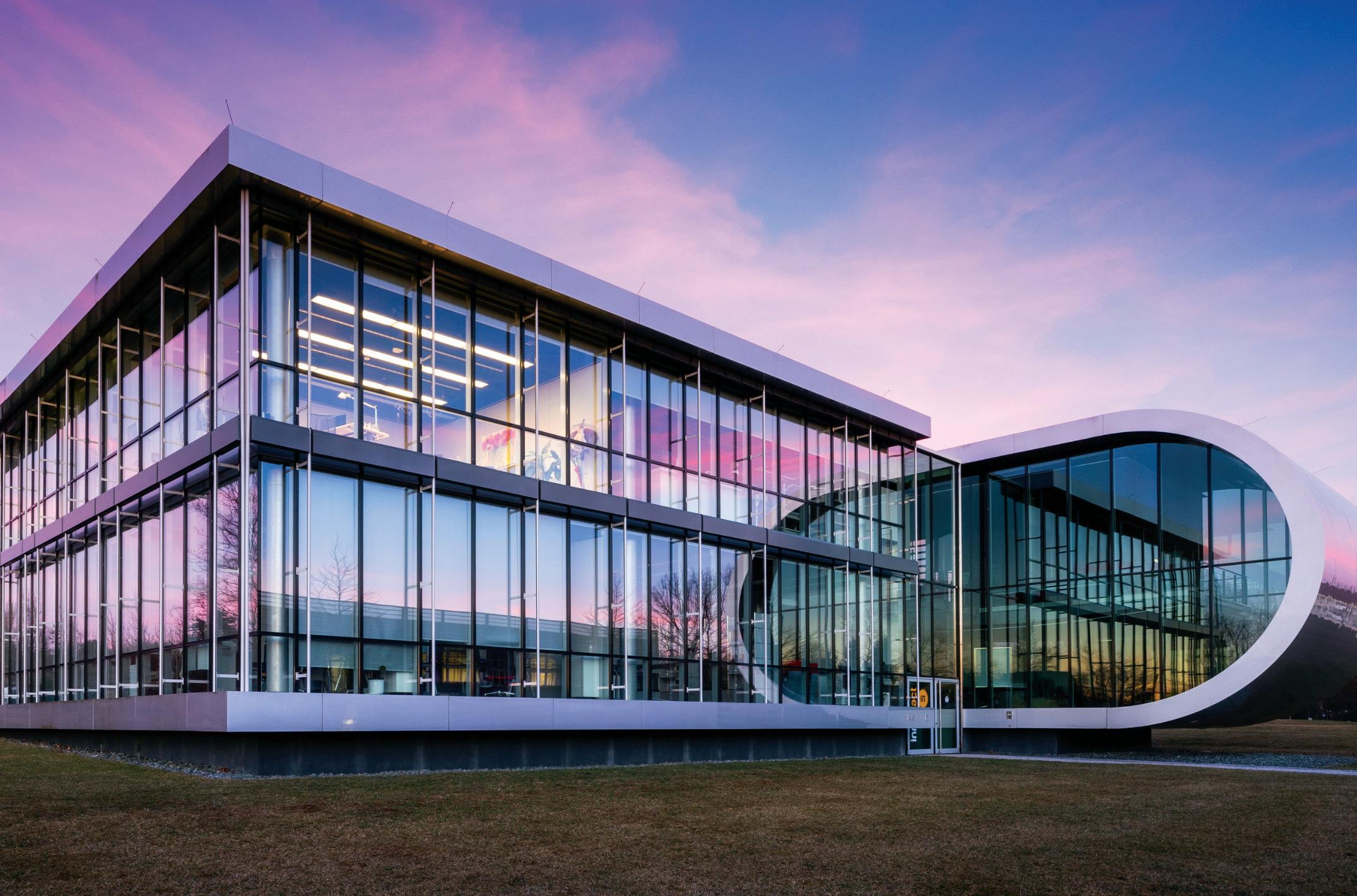
information is far too late and will come under scrutiny later on down the line and that’s where, on some occasions, we have been brought in to help.
By engaging us at the early stages of design, clients have assurance that the golden thread principle and requirements are firmly established, ensuring that all information is accurately captured and maintained from the o .
Furthermore, proactive compliance is achieved this way, as clients who integrate the golden thread early on are likely to face fewer delays and compliance issues, benefiting from a streamlined approval process at the gateway stages.
Data integrity, consistency and accuracy are also among the mistakes we have witnessed and been brought in to help, all enhanced by ensuring that team members work with the same information, preventing discrepancies and improving overall safety and quality.
And while so ware solutions can aid in managing the golden thread, it is essential for users to understand the underlying principles of building safety; so ware is a tool, not a solution in itself. A centralised and trusted source of information, the single source of truth, helps in making informed decisions and managing changes e ectively.
Start Early: Integrate the golden thread from the concept stage.
Clarity on Content: Agree with the team the information that needs to be captured through the project.
Designate Responsibility: Ensure there is clarity on who is managing the golden thread, and the responsibilities of every contributor.
Use Electronic Formats: Mandate digital records for consistency.
Ensure Proportionality: Tailor the level of detail to the building’s complexity.
Maintain Accuracy: Regularly update information to reflect changes.
Secure Information: Implement robust security measures.
Facilitate Access: Ensure information
is easily accessible to all relevant stakeholders.
Promote Understanding: Educate team members on the importance of the golden thread.
Plan for Longevity: Ensure the information can be maintained over the building’s lifecycle.
Audit and Review: Regularly audit the information to ensure integrity, compliance and accuracy.
The golden thread is an essential aspect of building safety that needs to be considered from the very beginning of any project. By integrating this concept early on, users can ensure that all safety information is accurate, accessible, and actionable. While it may seem daunting, the golden thread boils down to maintaining accurate and accessible safety information throughout a building’s lifecycle. By following basic principles, building projects will not only comply with regulations but also uphold the highest standards of safety and quality.


When you go to work, it’s easy to take for granted that you’ll go back home again. But, when you work at height, you’re putting yourself in danger. Even a low-level fall can be devastating. Mixing tower components compromises performance, invalidates the tower’s safety certificate and could lead to unthinkable consequences - and we don’t mean eating hospital food.
So when you use BoSS®, only use genuine BoSS® components. Anything else is just not worth the risk.

































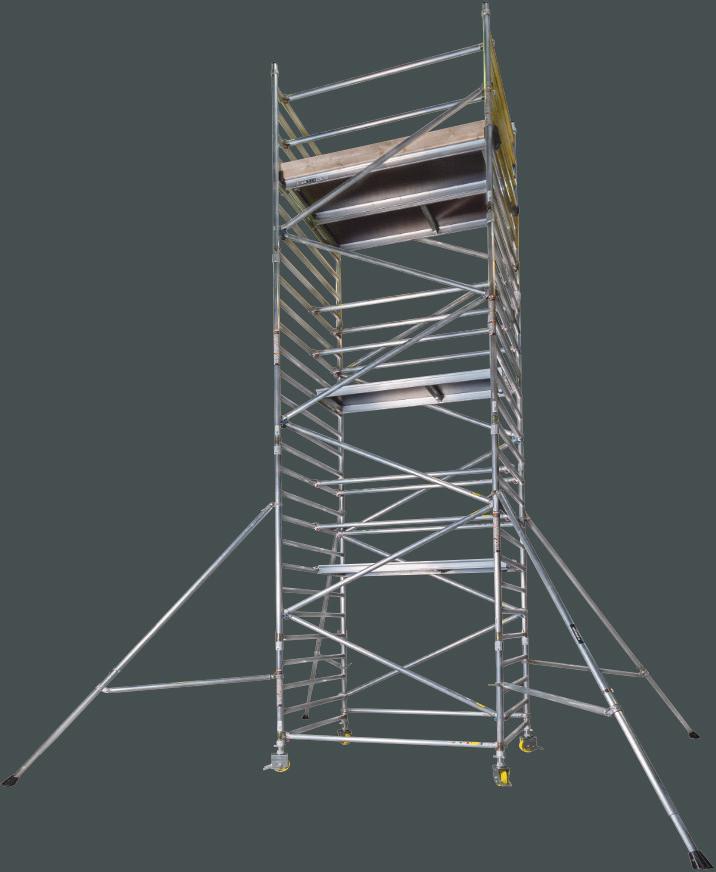





LikeWesley Smith, Sales and Marketing Director at The Clean Space explains why a customised approach to cleaning services should support the sector and culture of each client
many industries, commercial cleaning has been a ected by a number of challenges in recent years and companies have had to adapt to keep up with new technologies, evolving industry regulations, environmental requirements and the continuing labour shortage.
As organisations strive to create attractive and welcoming environments, the demand for customised cleaning solutions has surged. Organisations are looking for tailored services that cater to their specifics such as the type of facility, the volume of foot tra ic, and the nature of the activities conducted on the premises. This personalised approach not only ensures optimal cleanliness but also contributes to the overall e iciency of cleaning operations. It allows businesses to allocate resources
more e ectively, focusing on areas that require the most attention.
For many businesses post-COVID, returning the workforce to o ice-based working has required organisations to invest heavily in their cleaning and focus on building an environment of trust, comfort and security. This requires visibility, attention to detail and a consistent o ice cleaning team. The pandemic highlighted the critical importance of maintaining hygienic environments, particularly in hightra ic areas such as o ices, schools, and healthcare facilities. This has led to the widespread adoption of comprehensive cleaning regimes that include frequent
disinfection of high-touch surfaces and the use of hospital-grade disinfectants.
As employees return to the o ice the trend of allowing pets to come with them has been on the rise, reportedly significantly boosting employee morale and reducing stress levels. A report by the University of Lincoln reveals that employees who o en take their dog to work report a 22 per cent higher satisfaction rate with their working conditions. However, the presence of a pet also introduces new cleaning challenges such as increased fur, dander, and the occasional accident. Addressing these issues is crucial for the health and comfort of all employees, especially those with allergies or sensitivities.
Implementing a daily cleaning routine is key. This should include vacuuming to
manage pet hair and using pet-friendly cleaning products to ensure safety for both the animal and employees. Regular air purification can also help reduce allergens and maintain a fresh environment.
For more information on how to keep your o ice clean when you have a company pet, check out our Cleaning Guide (https:// thecleanspace.com/cleaning-industrynews-insights/how-to-keep-your-o iceclean-when-you-have-a-company-petcleaning-guide/).
In busy education settings, infection control is of paramount importance. The reliability, consistency and quality of daily cleaning is key to keeping students, sta , governors and visitors safe and well in the workplace. No two schools are the same, so cleaning services must be tailored to the needs of the building and its users.
Constant foot tra ic can lead to faster wear and accumulation of dirt and cleaning must o en be done outside of school hours, which limits the available time. Schools are also hotspots for the spread of illnesses, requiring stringent cleaning protocols. By adopting modern cleaning technology such as automated floor cleaners, cleaning operatives can enhance e iciency and e ectiveness; and by implementing systems that monitor and optimise cleaning schedules based on usage patterns, they can improve resource allocation. There is a growing emphasis on using eco-friendly cleaning products and practices in education environments. Using environmentally friendly cleaning agents reduces the ecological footprint and minimises the risk of chemical exposure.
In order to meet the stringent hygiene and sanitation needs of healthcare facilities, cleaning companies need to provide rigorous cleaning protocols to deliver e ective infection control and to ensure they adhere to regulatory compliance. We work closely with our healthcare clients to ensure we meet the criteria specified in the National Standards of Healthcare Cleanliness 2021. The standards are based around being easy to use; freedom within a framework; fit for the future; e icacy of the cleaning process; cleanliness which provides assurance; and transparency of results.
Cleaning theatres, museums, galleries and cinemas requires a full understanding of
each site and how it’s used. Not only are these spaces a workplace for their sta but they also have a large number of daily visitors, audiences, members, patrons, artists and performers to consider.
In order to create environments that are clean, hygienic and that instil complete trust amongst visitors’ commercial cleaners are embracing technology and automation.
The Internet of Things (IoT) has introduced smart cleaning solutions that provide real-time data on cleaning activities. IoT-enabled devices can monitor the cleanliness of washrooms, track inventory levels of cleaning supplies, and even alert sta when specific areas need attention. This data-driven approach enhances the e iciency and e ectiveness of cleaning operations, ensuring that high standards of hygiene are consistently maintained.
Robotic cleaners are also increasingly being deployed in large open facilities like museums and galleries, and are equipped with AI capabilities, enabling them to navigate spaces e iciently, avoid obstacles, and perform tasks such as vacuuming, mopping, and disinfecting.

they provide safe, clean, and healthy environments for all.
Transparency and communication have become increasingly important for commercial cleaning services.
Clients expect detailed information about the cleaning processes, products used, and the frequency of cleaning activities.
This transparency helps build trust and ensures that clients are confident in the cleanliness and safety of their premises.
Clients generally expect comprehensive reports and documentation of their cleaning activities. Digital platforms allow clients to track cleaning schedules, view reports, and communicate directly with cleaning sta . This level of transparency not only enhances customer satisfaction but also helps to maintain high standards of service.
Transparency and communication have become increasingly important for commercial cleaning services. Clients expect detailed information about the cleaning processes, products used, and the frequency of cleaning activities.”
Recruitment and retention of sta is one of the biggest challenges in the commercial cleaning industry both in terms of attracting great people but also in making sure cleaning teams are happy. Ethics and empathy have been at our core since we started. We believe in providing a better future for our employees and the community we serve. In line with this commitment, we’ve actively supported the Living Wage Foundation and its initiatives since 2015 and our Founder and CEO, Charlie Mowat, sits on the Living Wage Recognised Service Provider Leadership Group (RSPLG). His dedication to helping more employees receive the real Living Wage is a cornerstone of our approach to sta wellbeing and respect.
Commercial cleaning companies need to o er bespoke cleaning solutions and embrace innovations in order to thrive in this evolving industry, ensuring that
Over the past year we’ve added 272 new clients who are committed to paying their cleaners the Living Wage rate. By paying a fair wage, we’re setting a positive example for the broader cleaning industry, helping to raise the standard of living not only for our team but for cleaning workers across the UK.

Karl Cundill,
Partner
at LitmusFM believes Building
Management
Systems (BMS) aren’t being utilised to their full capability, and as a result, businesses and organisations are wasting energy

Thecommon issue we see with BMS systems and managing energy e iciency is that businesses o en don’t know how to utilise the systems to their full capabilities. It’s rare to find a company that has a specialist, dedicated BMS engineer within their in-house team; it’s a niche skill and across the FM market there is a lack of suitably qualified engineers and apprentices available. This results in businesses typically relying on people within their teams who can operate the BMS on a simplistic troubleshooting level – so they are able to ensure it’s on and working and do basic things such as monitor alarms and increase the air temperature – but that’s it.
This has been exacerbated by developers installing BMS in newer, BREEAM rated buildings (Building Research Establishment Environmental Assessment Method) simply in order to obtain credits to tick a sustainability box. Although the installation of the system boosts the building’s sustainability credentials, it quickly becomes futile if it’s not set up to be managed correctly on an ongoing basis.
Without proper management, the BMS is, in theory, layered on top of the existing building, as opposed to being
woven into the fabric of the operation, leading to ine iciencies.
For example, when users of the building request a warmer environment, engineers will simply just raise the temperature on the BMS, which inevitably leads to increased energy costs. This is reducing the BMS to nothing more than a temperature gauge on a boiler. There is a lot more to it than just that.
Firstly, engineers should check that the BMS still aligns to the building layout. If the building has been upgraded, the layout of the internal walls changed or rooms moved around, and their usage changed, the graphics on the BMS also need to change so it remains a true reflection of the realities of the physical building. So, if a university has reconfigured its lecture halls or event spaces, an o ice building has mothballed parts of its space due to hybrid working or hospitals have expanded their wards into previously unused spaces, this all needs to be reflected within a revised BMS.
Equally, if new assets or asset systems, such as air conditioning, are installed and the airflows within the building changes this also needs to be recognised on the BMS.
Even relatively low-scale changes, such as the glass screens that were put up in pretty much all buildings when we were in peak pandemic, would need to be updated on the system as these caused lots of issues with the balancing of the internal climate, causing the temperatures of entire floors to be a ected.
Not reflecting these changes will result in the BMS being far less e ective, not operating at an optimum level, and, over time, even becoming completely outdated.
Secondly, the BMS needs to truly reflect the occupancy levels and working schedules of the building’s people. A prime example of this occurred with one of our clients, who had all the supply and extract fans for their production floor operating 24/7, even though the building was not occupied for at least six hours per day. They had major air flow issues, over a number of months, and at one point the di erential pressure was so high it was nearly impossible to open the doors into the production area. The engineers thought it was an install or design issue, when it was actually down to the how the BMS system had been operating incorrectly. Plus, they were wasting vast amounts of energy powering the fans when no one was even there.
A lot of this is about proactively updating the BMS as and when elements within the building change. However, there is also the other side to it, which is about reacting and responding to the intel the BMS provides.
The BMS can provide real-time data from various operations within the building, whether that’s IoT sensors, lighting, HVAC, boiler plant rooms and so on. This data can inform engineering teams of any areas of energy usage that can be reduced, such as dimming lights in unoccupied areas or adjusting the temperature in rooms during peak and o -peak usage
periods.
These updates don’t even have to involve engineering teams. Systems which have advanced machine learning capabilities can adjust these settings in response to the data automatically.
The BMS can also be linked to renewable energy sources such as solar panels and heat pumps. Peak energy usage times could be powered by renewable sources and charged battery packs, and o -peak recharging powered by fossil fuels.
The right, skilled and experienced people can ensure the BMS is set up correctly and the real-time data is utilised. The data will identify areas where energy is being wasted and facilities managers can then take action – whether that’s tweaking and adjusting the internal design of the building, rethinking how the space could be used to streamline e iciency or looking at increasing renewable energy access.
Remote controlled monitoring and remote maintenance are all common place and can provide solutions to any lack of on-site or in-house expertise. Remote fix capabilities are a very attractive proposition when it comes to managing the system as a whole. It reduces the need for engineer visits; in fact, engineers can work from anywhere and still do their job in exactly the same way as if they were local. This also gives the opportunity for others members of the team to view the BMS performance at any time.
Remote controlled monitoring also comes into its own for larger scale businesses, which have multiple sites across the country or even globally. For the likes of major nationwide supermarkets, hotel groups or high street retailers it would have been down to the individual store manager to set building controls such as the air temperature or heating levels. Remote monitoring allows this to be managed centrally so a consistent level and standard can be easily achieved across multiple locations.
In short, invest in your team. Review the skillsets you have internally and make a plan to bolster and enhance any areas of weakness. This can be through upskilling your current team, bringing in external expertise and consultancy, or recruiting new inhouse members.
The Keyholding Company (TKC) are techenabled security specialists, passionate about raising the bar on e ective security management. They help clients design physical security solutions that genuinely move the needle to create safer spaces and empower security professionals to make intelligent, datadriven decisions.
The Risk Management Tool is a new feature in TKC’s existing online platform and an industry first, set to transform physical security risk management as we know it.
The Risk Management Tool combines an in-person client consultation with digital site risk assessments. The consultation captures bespoke risk appetite, assets, threats and impact levels to set protection baselines. The risk assessments are conducted via a mobile app comprised of 38 pre-configured questions replicating NPSA best practice security guidelines.
The output is dynamic risk dashboards where every site can be examined at a granular level, drilling down into asset-level data to identify areas of concern and evaluate security measures to ensure correct outcomes.
This quantitative approach to physical security and use of data-driven models will o er robust insight and help security professionals make smarter, coste ective decisions.
The problems with risk management today
The world of risk has evolved, but not how it is managed. Traditional pen and paper or excel-based approaches led by a single consultant involve inherent flaws, including:
Over-reliance on subjective assessments leads to
inconsistent risk modelling.
Undynamic reports hinder e ective analysis and solution design.
Manual assessments and lengthy reporting cause slow turnaround times and mounting costs.
Traditional risk modelling contains a lack of integrated consideration of assets and unnecessary expenses.
A better way

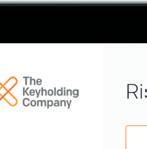






TKC’s consultancy division, TKC Consult, set out to address these challenges through technology.
Led by in-house risk experts, Rachel Webb, Chief Commercial O icer and Oliver Rutt, Head of Risk Consultancy, the result is a process across three phases:
Risk experts deep dive into a client’s estate, setting a protection baseline recorded directly into the platform. Data on crime, deprivation and environmental factors also give accuracy to the threat landscape.
Thorough app-based digital site risk assessments capture existing mitigations and vulnerabilities and can be done by any professional person at speed.
Dynamic, real-time dashboards show if protection meets, exceeds or falls short of baselines and can be filtered by BAU and heightened security scenarios.


The results?
Cost e iciency: Transparent data helps reveal where to replace over-investment into lower-risk areas with intelligent, targeted resource allocation.
Inconsistencies and biases eliminated: The methodology is solid, built on NPSA best practices, ISO and global risk management standards.
Quick answers: A digital approach means portfolios of any size can be














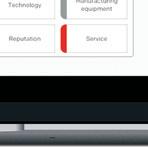





assessed rapidly by any professional person following standardised, guided assessments.
Audit trail: The impact of security adjustments over time can be evidenced easily.
The Risk Management Tool is the brainchild of Rachel Webb, a Chartered Security Professional and Professional Doctorate candidate in Security Risk Management. When speaking about the tool, Rachel says: “This tool has huge potential to help security professionals take creative control of their security outcomes and feel confident using data to spend their budget e ectively and implement changes that will have a marked impact on safety.”
For TKC’s CEO Charlie Gordon Lennox, this launch marks a new chapter for the company: “TKC have a tech-first ethos, which has enabled us to transform how mobile services are delivered across the UK. Introducing dynamic and accessible risk information into our platform further transforms our client’s ability to improve their security position. This link between risk requirements and service delivery is truly unique in the market.”
For more information on the Risk Management Tool, contact us at consult@keyholding.com or visit us at https://www.keyholding.com




Indoor air quality and ventilation manufacturing specialist Nuaire is pleased to announce its latest CPD, which addresses High Temperature Axial Fans & Variable Speed Drives (VSDs).
This new CPD has been introduced to clearly explain the standard ‘BS EN 12101-3:2002 Smoke and heat control systemsSpecification for powered smoke and heat exhaust ventilators’, and advise on compliance.
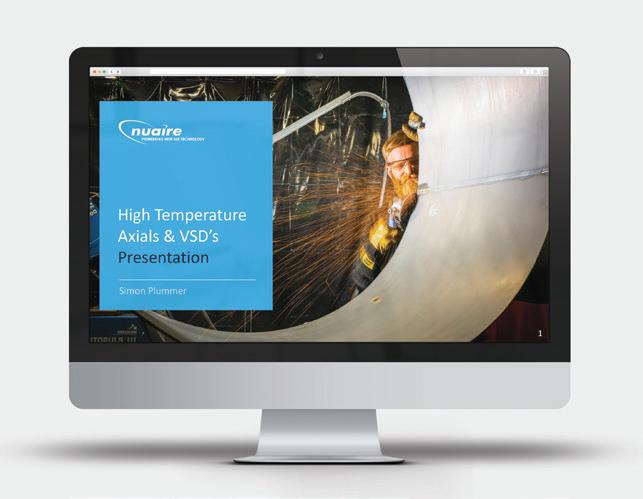

Simon Plummer, Nuaire Axials Divisional Manager and one of the UK’s leading fire safety experts, has written the CPD to provide clarification: “Frequency converters have been permitted for use during a fire event since 2015, enabling dual mode fans (those used for both day-to-day ventilation and high temperature smoke extraction) to be controlled by VSDs, even during fires. Prior to this, the VSD had to be bypassed during a fire event, with the fan running at 100%. However, there remains some confusion in the industry about how high temperature fans and VSDs can be certified and used for the various smoke applications within buildings. Our new CPD directly addresses this, explaining the standard in detail and the flexibility it o ers Consultant and Smoke Designers when it comes to designing solutions.”
To book the new CPD, go to (www.nuaire.co.uk/support/continuingprofessional-development/high-temperature-axials-and-vsds).
www.nuaire.co.uk enquiries@nuaire.co.uk
Tork manufacturer Essity showcased a range of sustainable hygiene solutions at Interclean.
These included Tork carbon neutral certified dispensers which were nominated for the Amsterdam Innovation Award.
Laptops and other power-hungry devices can now be USB-charged directly from the socket thanks to Knightsbridge’s new 63W PD (Power Delivery) wall charger. Suited to commercial and retail environments such as hotels, cafés, bars and o ices, the wall charger is Knightsbridge’s most powerful yet and supports PD, Programmable Power Supply (PPS) and Quick Charge (QC) through two USB-C and one USB-A ports.
With compatible cables, PD and PPS laptops can be charged straight from the socket using a 63W USB-C port, without the need for bulky adaptors. With the latest USB-C interface, many Android and Apple (iPhone 8 and above) devices also support fast-charging PD technology.
PPS fast charging is the most advanced charging technology for USB-C devices. The technology adjusts the voltage and current in real-time, depending on a device’s charging status, feeding it with maximum power.


USB-PD gives more power than standard USB charging making it the ideal choice to charge larger devices such as tablets and laptops. Devices that support USB-PD can use the USB-C port to achieve a maximum 45W delivery (20V DC 2.25A).
QC allows for the charging of devices, mainly mobile phones, at levels above and beyond the typical 5V volts and 2A amps for which most standard USBs allow. Legacy devices, such older Android-based smartphones, can charge at up to 15W via the USB-A port (20V DC 1.5A).
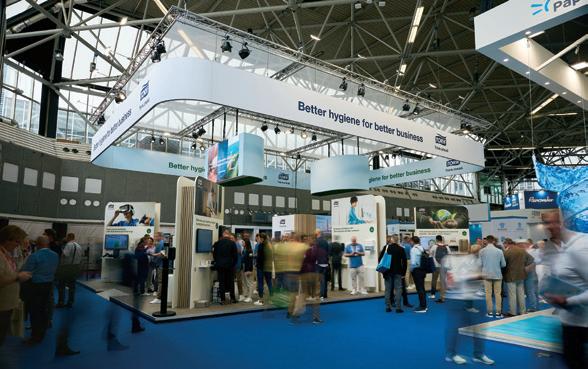
The dispensers are produced using certified renewable electricity while the remaining carbon emissions are o set via verified climate projects through ClimatePartner. The range is a step towards Essity’s commitment to net zero emissions, which has been verified by the Science Based Targets initiative.

Making their debut at Interclean were the new Tork Xpress® Compressed So Multifold Hand Towels which have been compressed by up to 50 per cent. This halves the number of refills required which minimises any disruption to businesses.
Also new was the Tork Soap and Sanitiser Dispenser with Arm Lever for touchless dispensing, and the Tork 2 in 1 Scouring and Cleaning Cloth. This is an absorbent, abrasive and versatile wiper designed to save time and e ort when cleaning.
The new Tork Natural Colour range of washroom tissue products also featured on the stand. Made from 100 per cent recycled fibres, the toilet paper and hand towels in the range have a natural, light brown hue to demonstrate the customer’s sustainability values to employees, guests and visitors.
All Tork Natural Colour washroom products are compatible with Tork PaperCircle® - the world’s first recycling service for paper towels.
A Sto external wall insulation (EWI) system spanning 8,000m2 has upgraded the exterior of a waterside residential development in Canary Wharf, London, providing fire compliant facades.
Pierhead Lock is situated opposite the O2 arena on the River Thames. Beginning with a 12-storey tower by the water, the development gradually steps down to two storeys as it curls round the dock. Noviun Architects were responsible for designing remedial works for the exterior cladding, which required the existing expanded polystyrene insulation (EPS) to be removed, to comply with amendments to the Building Regulations. Following extensive investigative work, the architects and façade restoration specialist Stoneguard worked with Sto to develop a detailed specification of the EWI system.


The BBA-certified StoTherm Mineral K external wall insulation system achieves a reaction to fire of A2-s1, d0 in accordance with BS EN 13501-1. The A1-rated mineral fibre insulation boards were adhesively fixed to the concrete substrate using StoLevell Duo Plus.
StoFlexyl, an acrylic-based, fibre-reinforced waterproofing product was also used to encapsulate the insulation below the dampproof course.
To reflect Pierhead Lock’s original architectural style, the system was finished with StoSilco K1.5 silicone resin render. This provided a crisp white finish as well as high levels of water repellence and protection from harsh weather conditions.
www.sto.co.uk/s/ info.uk@sto.com
Four Decades of Funky Foliage! Funky Yukka, the pioneers of plantastic workspaces, are celebrating a milestone 40th anniversary this year. What began as a small group with a big dream of bringing nature indoors has blossomed into a thriving company, maintaining over 3,000 vibrant plant displays across the country.
Funky Yukka's story is one deeply rooted in sustainability and wellbeing. Long before biophilic design became a buzzword, they recognised the power of plants to transform o ice spaces. Their mission? To create happy, healthy work environments that not only look stunning, but also improve air quality, reduce stress, and boost creativity.

for people and good for the planet."

"We started with a simple idea: bring the outdoors in," says Daniel Foster, CEO of Funky Yukka. "Over the years, we've witnessed a dramatic shi in how businesses view their workspaces. Now, plants are no longer just a decorative a erthought; they're a key element in creating a well-designed, wellness-focused environment."
Funky by Design, Sustainable at Heart Funky Yukka doesn't just talk the talk, they walk the walk. Their commitment to sustainability is evident in everything they do. They source eco-friendly materials, prioritise energy-e icient practices, and are dedicated to achieving net-zero emissions.
"Sustainability is at the very core of our business," says Katie Lainton the groups Chief Operations O icer. "We believe in creating beautiful spaces that are good
From Quirky to Mainstream: The Plant Power Revolution
Remember the days of dull, sterile o ices? Thanks in part to Funky Yukka's trailblazing e orts, those days are a thing of the past. Today, plant displays are a must-have for modern businesses. Studies show that incorporating greenery into workspaces leads to a range of benefits, including increased productivity, improved mood, and reduced sick leave.
Looking to the Future: Rooted in Success Funky Yukka isn't resting on their laurels. They're constantly innovating, developing new plant care solutions and expanding their range of sustainable products. Their vision for the future is one where every workplace is a thriving oasis, fostering creativity and wellbeing for all.
So, here's to Funky Yukka! May they continue to inspire businesses to embrace the power of plants and cultivate a greener, healthier future, one o ice at a time!
Worldwide voice alarm and safety communications specialist Vox Ignis has launched its new unified PAVA system, Unicorn Voice, a er becoming the global first to receive UL certification to EN54-16. This European standard specifies the requirements for voice alarm controls and other equipment used in fire detection and alarm systems.
Unicorn Voice is a powerful wall-mounted, scalable public address and voice alarm (PAVA) system for almost any site. It is designed to be the easiest to specify, install, and configure. It can grow from one panel to a fault-tolerant network of 64 multi-amplifier panels with up to 256 speaker circuits supporting over 163,000 speakers as per BS EN 5839-8.
Unicorn Voice is easily programmed and managed via integrated, intuitive touch screens or PC and o ers a range of amplifier sizes and speaker taps that maximise power e iciency. Amplifiers can be hot-swapped, and Vox Ignis’ speaker range promises easy first-fix with plug-and-play installation. Unicorn Voice o ers pre-recorded and live voice messaging, background music, integrated fire telephones,
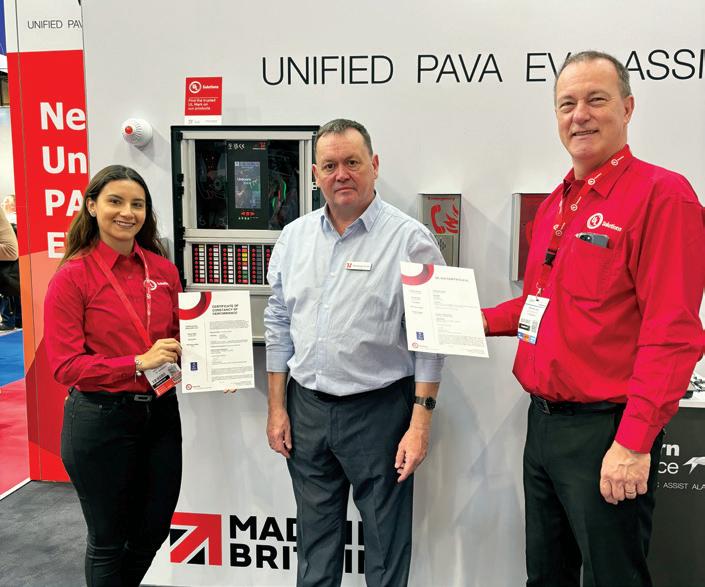

disabled refuge, fire alarm VADs, and assistance alarms, delivering one system for all the fire and life safety voice and alert systems required in modern sites.
Anthony Smith, Managing Director of Vox Ignis, said: “Unicorn Voice is the result of a £multi-million development project and 30 years of leading experience. It delivers a best-in-class feature set,
a product that demystifies the voice alarm world and ensures the very best audio safety systems are available to the market.
“We are proud that this is the first product to have been tested and certified by UL to EN54-16, or any EN or UK standard. I’d like to thank the UK and USA UL teams for their contributions. Achieving UL certification is not easy, and that is why it is one of the most well-respected certification marks in the life safety industry.”
Karine Johnfroe, Vice President and General Manager of the UL Solutions Built Environment Group, said: “For 130 years, our organisation has been integral to enabling fire and life safety technology advancements. Our pioneering safety science e orts and technical leadership in this area have empowered makers of fire safety equipment to help safeguard lives and property.
“We are honoured to continue this work as a notified and approved body for the Construction Products Regulation to EN and UK standards, and we commend Vox Ignis for working to demonstrate their product’s compliance.”
Siemens Smart Infrastructure is launching a new building management so ware designed to o er an open, powerful and scalable so ware solution for one to many buildings of any size.
Desigo Optic is powered by FIN framework (developed by Siemens partner company J2 Innovations) and brings the latest IoT technology to buildings such as schools, sports facilities, smaller hotels and retail outlets.
It features a ‘single pane of glass’ interface to visualise and control HVAC, lighting and energy performance functions with a market leading dashboard builder. The open protocol approach ensures easy and seamless integration with Siemens and other third-party building automation systems, IoT devices and IT based applications. Major protocols such as BACnet, Modbus, KNX and OPC are all supported.


Desigo Optic applies Haystack native semantic
tagging to ensure harmonisation of data and fast access to critical building information, typically streamlining workflows by a third. Secure Edge2Cloud remote access technology (removing the need for, and the cost of, a VPN) allows ease of access to data, servicing and upgrading, reducing the requirement for
site visits. It can be deployed in two ways: either on a server or on an embedded controller.
Ensuring that all building types are not forgotten in finding ways to adopt decarbonisation measures is crucial in the move towards net zero operation. A recent study by Siemens showed that fewer than 50% of organisations expect to meet decarbonisation targets by 2030. Desigo Optic is an important development in helping buildings to not only provide environments which actively contribute to the wellbeing of their users, but also to do so in a more resourcee icient way.
For further information on Siemens Building Products www.siemens.co.uk/ buildingtechnologies
For information on Smart Infrastructure, please see www.siemens.com/smart-infrastructure
Northwood Hygiene Products Ltd - the leading manufacturer and supplier of away-from-home (AfH) professional paper hygiene and wiping products - has saluted the recent Interclean show, crediting it as the perfect opportunity to gain feedback on exciting new product developments.
Paul Mulready, Marketing Manager at Northwood Hygiene, said: “The show was a huge success for
Northwood. It was great to see so many of our existing customers and engage with them about some exciting innovations that we have just launched, such as our dispenser recycling service, which is part of our Green Loop scheme.
“It was also an opportunity to connect with customers about some new projects that we have coming up, including 100% recycled dispensers and natural paper. We rarely get the chance to show so many innovations and value-added brands to such a large and diverse number of customers, and it was really valuable for us to gauge their interest.


“We also met with potential customers, both from the UK and Europe. Visitors to our stand were really impressed with the Green Loop innovations we are o ering and our reliable, well accredited supply chain. We are very much looking forward to engaging with these prospects post show.
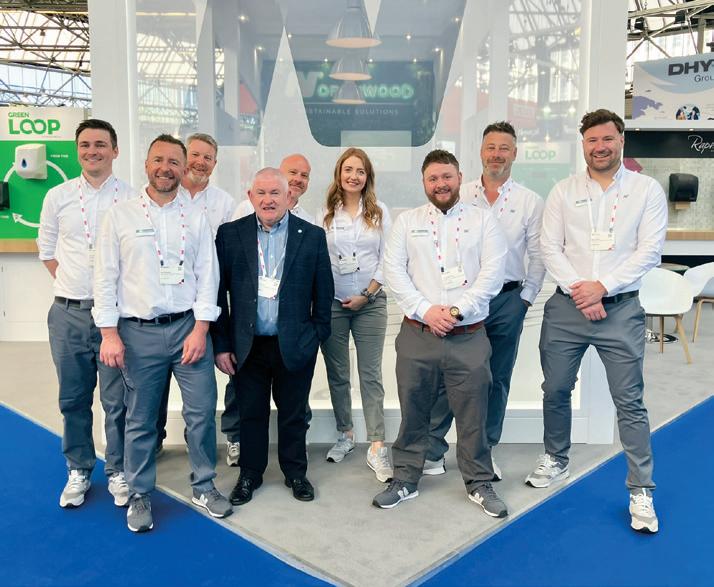

“In addition, our focus at the show was to showcase our value-added brands, namely North Shore, Raphael and Whisper. It was the first time we have exhibited the recently rebranded Whisper range and the show was the perfect platform for us to launch our new Whisper facial tissue collection. The feedback was very encouraging.”
For further information on the Northwood ranges, please visit www.northwood.co.uk, or call 01952 236 930.
A heating system has been relaunched by leading manufacturer Reznor UK to give users greater control to boost e iciency levels and reduce running costs.
The Nor Ray Vac system, a gas fired continuous radiant tube heating system, has modulating burners for improved e iciency and control, provides better uniformed heat coverage thanks to its continuous radiant tube, with a filtered burner air inlet helping keep the burner head and components clean.
Boasting an aesthetically pleasing, bespoke appearance it can be tailored to suit building shape and size, while its NR40 rating means noise levels are lower than other systems on the market.
O ering a larger rated burner than before, it has more burners per fan which means less flue points.
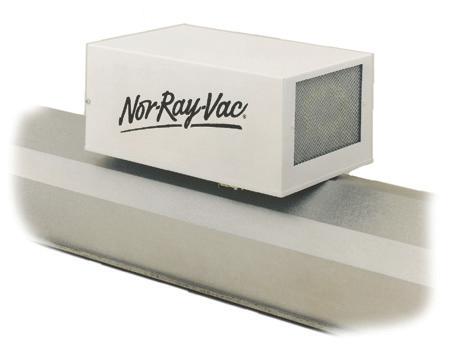
With a long continuous tube which can reach 84m, the Nor Ray Vac system can be used in rail sheds and aircra hangars or other

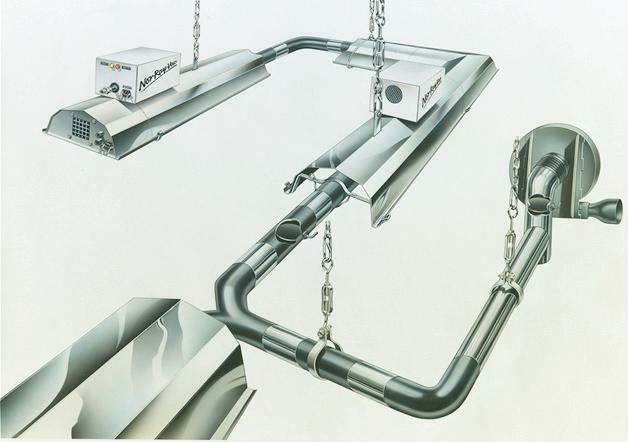
large open spaces.
Richard Leese, European General Manager at Reznor UK, said: “Reznor UK has always been committed to providing premium heating solutions combining comfort, e iciency, and reliability, so with the relaunch of the Nor Ray Vac system, we are taking these principles to new heights.
“Installation is quicker, it is easier to maintain and it is easier on the eye, all while maintaining the functionalities that make Nor Ray Vac an industry name.
“The Nor Ray Vac has been popular so when we put production on hold in 2022 we took the opportunity to simplify the system to manufacturer, ensuring we kept to its original great design.
“We are looking forward to building upon the system’s heritage by engaging with consultants, end consumers and contractors to demonstrate how the Nor Ray Vac system is tailored for both small and large buildings.”
The Nor Ray Vac System have been used in a range of premises including aircra hangars, garages and showrooms, greenhouses, museums, factories, warehouses, distribution centres, sports halls and large retail outlets.
Its reliability and safety of operation meets the latest European standard for multi-burner systems.
Reznor UK is a trusted supplier of e icient industrial and commercial HVAC solutions, specialising in warm air heating, radiant heating, air curtains and more.
It is part of the most trusted worldwide HVAC manufacturer group, Nortek Global HVAC.
Operating for more than 100 years, Nortek works to a commitment to excellence and industry-leading innovations has set us apart.
A video produced by a Siemens Building Products partner is illustrating the importance of manufacturers and installers working closely together to realise the optimum solutions for protecting buildings from the threat of fire.
Diamond Systems is a Belfast based company that has specialised in life safety and security systems for almost 40 years. It is a second-generation family business and has been partnering with Siemens since April 2013. Joint MDs Angela Bennett and Stephen Snoddon wanted to celebrate that partnership and decided to create a video which provides an overview of the Siemens systems they o er and how the two companies work together to achieve maximum fire safety for building owners and operators.
The video focuses on the two main systems manufactured by Siemens: Cerberus Fit for small to medium sized premises and Cerberus Pro for the larger applications. Stephen talks of the range of benefits to installers, including features such as the line tester tool through which cables can be tested before the commissioning process can start, pinpointing any open or short circuits, and any earth


faults, making for a more e icient installation. Angela recognises the issue of false alarms, citing that 99% of automatic fire alarms in Northern Ireland turn out to be false. The guarantee against false alarms that Siemens gives for its Cerberus™ PRO Advanced Detectors with ASA is an important contributor to addressing this and, as Angela says: –“We believe this technology could significantly reduce the unnecessary burden on both the fire and rescue services and on the premises owners themselves caused by false alarms.”
Rob Yates, Siemens Head of Building Products Fire Safety in the UK and Ireland, said: “We have the confidence in our technologies to be able to provide a guarantee but that is only half the story. Equally important is the expertise of the installer - site surveys, installation, commissioning and maintenance are all vital in ensuring that the detector operates correctly, with the settings appropriate for the environment it is protecting. Hence the guarantee is administered by our approved partners, who we work closely with to ensure they have the appropriate training and product knowledge. Companies such as Diamond Systems are an excellent example, with their third-party certification to the NSI Gold standard since 1993.”
The video can be viewed on Diamond Systems’ Youtube channel. https://youtu.be/ d18BakG8Od4?si=gMxhan_Gy9OVP9k-
For further information on Siemens Fire Products www.siemens.co.uk/cerberus
For information on Siemens Smart Infrastructure, www.siemens.com/smart-infrastructure
www.siemens.com/uk/en/products https://youtu.be/d18BakG8Od4?si=gMxhan_Gy9OVP9k-
A company that helps organisations reduce their carbon footprint and energy costs has become the first to design a method of harnessing waste heat from MRI machines.
Viridis Building Services devised the ground-breaking innovation as part of its work to deliver the UK’s first fully net zero Community Diagnostic Centre (CDC), in Scunthorpe town centre.
Tasked to achieve as close as possible to net zero with the scheme, Viridis has introduced a combination of natural and mechanical heating and ventilation, roof-mounted PV tiles and optimal lighting systems. But as part of its problem-solving process, it has also pioneered a method for capturing the enormous amounts of rejected heat from the centre’s two MRI machines and feeding that energy back into the 2,000 sq. metre building.


The use of MRI machines as energy providers rather than energy wasters had never been done before. Heat produced by MRIs would normally be ‘disposed of’ through a fan to the outside atmosphere, whereas Viridis found a way to collect and re-use it with the use of heat pumps.
A building like Scunthorpe CDC would typically have expected to pay around £60k-£65k per year for its energy. But with the Viridis innovations, it is expected to have zero energy costs and figures indicate it may be able to sell around £1k of energy back to the Grid.
https://viridisbsl.co.uk
sustainable@viridisbsl.co.uk
Cleaning manufacturer and distributor Robert Scott has launched an innovative new modular recycling bin system to help businesses simplify waste management, enhance recycling e iciency, and comply with new legislative requirements.
The new 80 litre capacity Procycle Recycling Bin, featuring lid and back panel, is a versatile, cost-e ective, and customisable system designed to support businesses in complying with evolving waste management requirements –including new and upcoming legislation across Wales and England.
Condair has released a new podcast for HVAC professionals on how to select and size a commercial humidifier. In a 15-minute interview with BusinessNet Explorer, Dave Marshall-George, Sales Director at Condair, explains what should be considered when setting out on a humidifier project.
Dave comments: “This podcast will be really helpful for any building services consultant, contractor or FM who needs to understand more about humidification of a commercial premises. Humidifiers are essential in many applications, but projects of this type don’t come along very o en. So it can be di icult for HVAC engineers to get the experience needed to successfully design a humidification system. In this podcast, I describe the main elements that determine whether a humidifier should be used in an AHU or directly in a room, which type of humidifier fits what type of application and how to correctly size a unit for an area.”


This latest Condair podcast is available at (www.condair.co.uk/podcast) hyperlink ( https://www.condair.co.uk/knowledge-hub/podcasts) as well as on Spotify, SoundCloud and YouTube. Also, available on this Condair webpage is Condair’s back catalogue of podcasts. The series of bite-sized, informative audio episodes cover topics like how to use humidifiers for evaporative cooling in AHUs, how to combat static with humidity, humidity’s impact on health and how to use dehumidifiers to reduce ice in commercial freezers.
www.condair.co.uk uk.sales@condair.com


Recent legislation in Wales mandates all businesses, charities, and public sector organisations to sort their waste for recycling so it is kept separate throughout processing. Similarly, in England the Government has recently announced comprehensive reforms to boost recycling rates and protect the environment. These include a standardised approach to recycling across the country, requiring most businesses to implement new recycling practices by March 2025.
The Procycle Recycling Bin 80L enables easy adaptation to various recycling requirements by making it simpler for organisations to manage and separate their waste e ectively and sustainably. The modular system includes connectors so users can build bespoke multi-recycling stations tailored to their specific needs, with colour coded back panels for seven di erent waste streams. These waste streams include glass bottles & jars; food tins & drinks cans; mixed card; food waste; plastic packaging; general waste; and mixed recycling.
Evolution, the integrated fire and security business, has appointed Lars Pedersen to the new position of Country Manager for the Nordics to establish a new regional presence and continue to build the dedicated local team.
Lars joins from LenelS2 where he spent over 20 years in various senior roles, latterly as Regional Sales Director for Northern Europe based in Oslo. He is an engineer by profession having worked in the security industry since 1987, building skills in project management, product development, and sales.
Within Evolution he will take the lead on the company's existing programmes for global operators as well as developing new business opportunities with local firms and critical infrastructure providers in Norway, Sweden, Denmark, Finland, and Iceland.

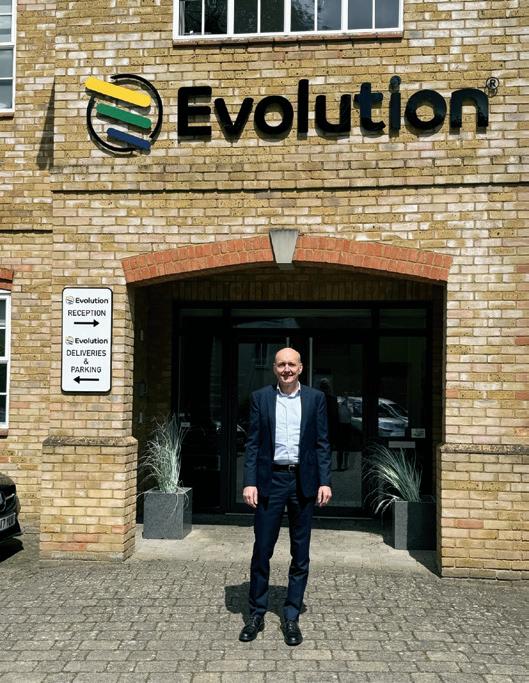
Richard Lambert, Managing Director of Evolution, says that Lars’ product knowledge and industry experience are key: “Having a local presence will not only enable us to provide even better support to our existing clients but also actively develop new opportunities with local organisations. The scale of the market opportunity warrants the significant investments we will be making in establishing a new regional hub and recruiting further recognised talent.”
Evolution has been a Lenel Value Added Reseller (VAR) for nearly 30 years.
Altro Wood adhesive-free safety flooring has brought natural, biophilic design to Ipswich Hospital, providing a safe, durable, and decorative solution for busy spaces.
East Su olk and North Essex NHS Foundation Trust needed to modernise various busy areas at Ipswich Hospital, aligning with the values of the New Hospitals Programme (NHP), emphasising e iciency, adaptability, sustainability, and cost savings. Given the aging infrastructure, a careful selection of products was essential.
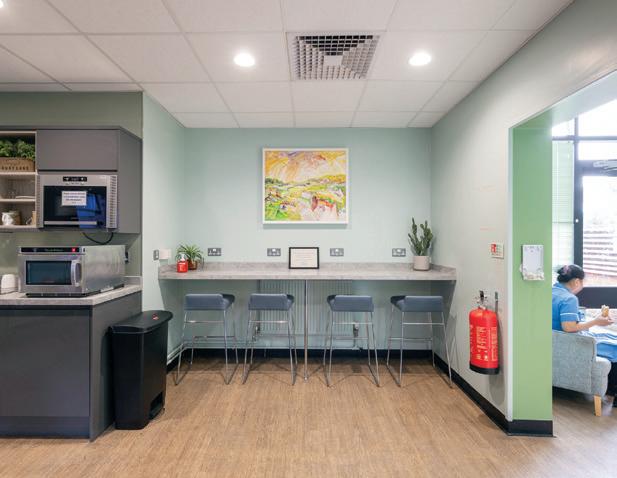

Altro Wood adhesive-free was specified in various colours to suit the di erent aesthetics for areas including patient wards, site operations centre, education centre and the oasis space for sta .
A er having used adhesive-free floors at its vaccine support hubs in Colchester and Ipswich, the Trust knew that removing the requirement for adhesive cut down installation time by 50%, and there would be no contamination of sensitive areas by dust or odours. The floor is also 100% recyclable and re-usable post-installation and reduces overall project costs.
Using Altro’s award-winning adhesive-free installation method, Altro Wood adhesive-free can be welded and walked on the same day, and at the end of its life can be removed easily, allowing it to be reused or recycled. It is ideal for busy public spaces where disruption needs to be minimal, plus there are no associated adhesive odours.
www.altro.com enquiries@altro.com
M&G Fire Protection, a highly accredited fire system installation company, won 'Fire Safety Installation Company of the Year' at the recent Fire and Security awards.
The company, owned by industry specialist Steve Middleton, was honoured for completing a complex, close to £1 million NHS project in London, which was delivered on time and within budget. A credit to their in-house expertise.
Leading power tool manufacturer Makita UK has added the new cordless HW001G XGT High Pressure Washer, to its high performance 40VMax XGT range. An ideal solution for trade professionals working with no access to mains power, it provides exceptional mobility combined with a reliable and regular flow rate and pressure, facilitated by three di erent operation modes.
The new 40VMax HW001G XGT Brushless High Pressure Washer o ers a powerful performance akin to corded washers, with a maximum permissible pressure of 11.5 MPa. Three operational modes allow users the flexibility to control the pressure depending on the di iculty of the cleaning task at hand – whether it is light washing right through to the toughest clean required for building exteriors or farming machinery.

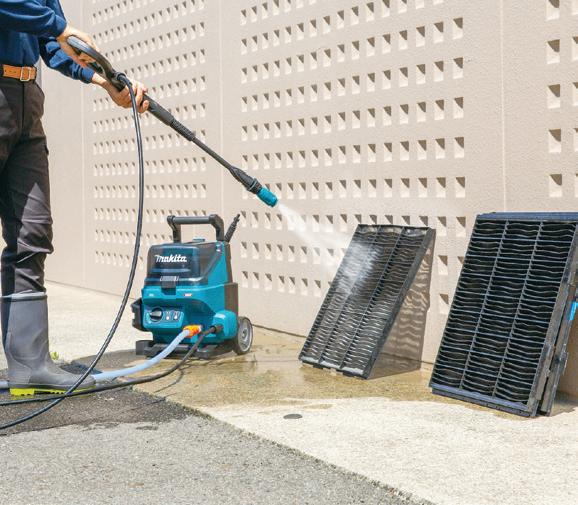
The advantage of the Makita XGT battery operation means that when fully charged, the washer can be used for either 60 minutes in the basic Mode 1, 30 minutes in Mode 2 and 18 minutes in the hardest working - Mode 3. The washer can perform with just one battery or with two in parallel, allowing you to keep on working even when one of the batteries needs charging.
The HW001G is self-priming, and water can be supplied from a tap, bucket or tank.
Weighing only 8.5kg, a telescopic handle allows the height to be adjusted to 520mm, meaning it is simple to store.
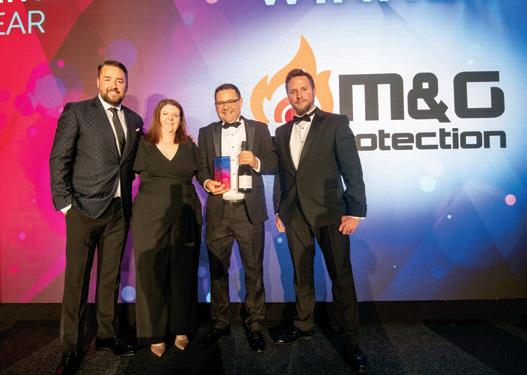

The fire system at Newham University Hospital required network wiring upgrades to support the current system and future upgrades. The old system couldn't be expanded, and transmission times needed to be faster.
M&G worked alongside the Trust's project team to design a new network of 98 Advanced MXpro 5 panels, while keeping the existing system live. They aligned the cause and e ect, zoning, and alarm zones with HTM0503-Part B and the fire strategy.
Given the long-term nature of the upgrades, M&G designed the network to integrate future elements seamlessly.
A er seven months, the project was handed over. The Senior Project Manager from Turner and Townsend commended M&G's work: "The team worked in harmony with the hospital's day-to-day activities, and we cannot thank them enough for their hard work and congratulate them on a highly well-delivered project which our client Barts NHS Trust was happy with."
View the full case study at https://bit.ly/3VNRZ3k.
https://mgfire.co.uk/ info@mgfire.co.uk
01376 519
Condair has appointed Sally Parker as its new Area Sales Manager for the Midlands and South Wales. Sally joins Condair with a wealth of HVAC experience having worked at ACR wholesaler, TF Solutions, and Wolseley Climate Centre.
Dave Marshall-George, Sales Director at Condair, comments: “We are really delighted to have appointed Sally as Area Sales Manager. She’s a very experienced sales manager with a proven track record in the industry and we feel lucky to have her join us.”


Sally commented: “I’m really looking forward to getting to know Condair’s existing clients and helping new potential customers get to grips their humidity control issues. Condair is well-known as the leading manufacturer in the humidifier sector, with outstanding engineering quality. They operate across so many end-user sectors, it’s really astonishing. I’m keen to get to know all the di erent industries and start supporting consultants, contractors and FMs with their humidifier, dehumidifier or evaporative cooling projects.”
The Condair Group is the world’s leading specialist in humidity control and evaporative cooling, with energy e icient, hygienic and innovative technologies for commercial, industrial and heritage applications.
www.condair.co.uk uk.sales@condair.com
Mobile. Easy. Secure. It’s with these three promises that SimonsVoss has launched its most recent innovation – the AX2Go mobile which is able to open its range of digital locking components with a smartphone.
With the launch of the AX2Go mobile key, the digital locking technology specialist now o ers an alternative to conventional identification media, such as transponders and key cards, enabling more flexible and secure short-term authorisations for building service providers, employees and visitors across a range of industries.


entrants’ phones.
Bruce Donald, UK & Ireland Country Manager for SimonsVoss said: “A user simply needs to install the AX2Go app on their smartphone and receive the necessary authorisations from the administrator of the locking system. Placing their smartphone on the lock then opens the door they require.”
The AX2GO mobile key
The new o ering from SimonsVoss will allow building and facility managers greater access control and flexibility via smartphones, reduced management costs and better access to real-time data from
The AX2Go mobile key is ideally suited to enhancing secure access control and e iciency across many industries, including public sector buildings such as educational institutions, museums and theatres. Hospital and medical care buildings, o ices, co-working spaces, and student accommodation buildings are also key application opportunities for the AX2Go mobile key.
Using Bluetooth Low Energy (BLE), the AX2Go mobile key allows a smartphone to be used like an access card or transponder via the AX2Go app, so no internet connection is required to open locks. The app is supported by all common smartphones and with an iOS and an Android version also available, coverage
As educational facilities approach the end of the academic term, facilities managers and tradespeople may be looking ahead to the maintenance and repairs that are needed over the summer break. Leading specialist retailer IronmongeryDirect can streamline the procurement process, with everything from complete fire door kits to access control hardware, and electrical products – all in stock to suit a range of applications, including:
• Washroom projects
• Lighting updates
• Managing health & safety
• Fire door maintenance and escape routes
Kelly Wing, Senior Category & Direct Sourcing Manager at IronmongeryDirect said: “We understand the upkeep and maintenance of an educational estate can vary from quick fixes and repairs to more comprehensive installations and renovations and importantly, it needs to be completed within very limited timeframes so as not to disrupt students and teachers. By choosing IronmongeryDirect, facilities and estate managers can source all the items from one supplier and get them delivered to their own schedule – even next day. Education specifiers and facilities managers can also make use of our ‘Trade Quote’ service for larger jobs to secure even more savings.”
of up to 99% of the smartphone market is possible.
Conventional identification media must be handed over physically – this is no longer the case when mobile AX2Go keys are used. The administrator simply assigns the authorisations in the administration so ware and then sends these straight to the user by email, text message or via a QR code.
SimonsVoss has always been proud to o er a multilevel, extremely complex and secure end-to-end encryption method for all data to be transmitted. This principle has also been strictly implemented for AX2Go, as only programmed components from the same digital locking system contain the necessary information to decrypt the data transmitted. In addition, extra security is o ered because the smartphone’s display must be unlocked to use AX2Go. Firstly, this means that nobody other than the user defined by the administrator can enter the doors equipped with digital AX locking technology, and, secondly, the unintentional opening of doors is avoided.


IronmongeryDirect is a leading specialist supplier of ironmongery to the trade, with over 18,000 products in stock.
UV400 is becoming an increasingly common feature of eyewear designed for the outdoors but what is it and why does it matter? Clair Weston, Head of Marketing at uvex explains more. When it comes to protecting our eyes from the harmful e ects of ultraviolet (UV) radiation, not all eyewear is created equal. The EN166/170 standard specifies that safety eyewear should provide UV protection up to 380 nm. However, recent recommendations from the World Health Organization (WHO) and the latest scientific studies suggest that this level of protection is insu icient. They advocate for safety eyewear lenses to provide UV protection up to 400 nm, encompassing both UVB and UVA rays.


The benefits of choosing UV400 eyewear uvex has always stood for maximum protection against UV radiation —UltraViolet EXcluded is not only in our name, but also a priority in our range. We are therefore a strong advocate of advanced eyewear technology that ensures optimum protection against UV radiation and we are dedicated to raising awareness of the importance of investing in the most e ective protection. Our commitment to eye safety is evident in our UV400 technology, which is a standard feature in all uvex safety eyewear.
Features of uvex UV400 eyewear:
• 100% UV protection • Protection beyond the eyes • Enhanced comfort and style


Mark Whittaker CIWFM, is to serve a fourth year as Chair of the IWFM following a decision by the Board to extend his tenure by a further year. The appointment announced alongside details of the 2024 AGM, follow a 2023 review of the Institute’s Governance structures resulting in the introduction of new rules which allow an incumbent to remain in position for a total of four years, following a formula of a two-year term, then two one-year extensions subject to Board approval.
Whittaker said: “It is an honour and privilege to have my tenure as Chair extended for a fourth and final year.
“My priorities remain as they were at the start of my tenure, namely the ‘six Cs’: continuity, community, chartership, communication, character, plus advocating for WFM as a career of choice for the workplace and FM professionals of the future. I look forward to delivering for the community and profession for the remainder of my tenure.”


The British Council for O ices (BCO) has elected Peter Crowther, Co-Founder at HERE, as its new President with immediate e ect. Crowther brings to the role expertise in navigating the intersection between the o ice and other sectors, as well as a passion for creating and delivering innovative and sustainable workplaces. His career spans more than 25 years in real estate.
Crowther first joined the BCO in 2010, acting as a member of the BCO’s Northern Regional Committee. He was also a member of the National Awards Judging Panel between 2012 and 2017, acting as Chair of the panel in 2015.
The presidential team sees Helen Hare, Director of Projects at GPE, take on the role of Senior Vice President. Andy McBain, Head of Future of Workspace & Design at NatWest, becomes the new Junior Vice President. Bruce Paterson, Founding Partner at Quantem, continues his role as Honorary Treasurer.


FM so ware provider, Service Works Global (SWG), has appointed Nigel Robinson as its new UK General Manager. Robinson’s core responsibilities will include leading the UK management team, developing strategic plans, KPIs, and budgets, and supporting revenue targets set by the Executive Team. He will also work with SWG’s other global managers to improve international systems and operations.
Robinson comes to this role with more than 18 years of experience in professional services, including eight years as professional services director. During previous roles, he has led teams of up to 40, supporting and upskilling them to drive sales and expand the company’s portfolio and client base. He has previously received awards for Business Consultant of the Year and Best Newcomer, and recently developed a new professional services governance framework to drive consistent improvements across delivery.







While there’s been increasing awareness across UK workplaces about menopause and the importance of retaining this large and experienced group of people, more needs to be done, says Lyndsey Oliver, Head of ED&I (Equity, Diversity & Inclusion) BaxterStorey
Women of menopausal age (around 45-54 years old) make up 11 per cent of all people in employment and 23 per cent of all women in employment. Women over 50 also represent the fastest growing segment of the workforce, with a third of the working age population now over 50. And yet, less than a quarter of businesses have a menopause policy in place.
Symptoms including anxiety, mood swings, brain fog, hot flushes and irregular periods can start years before a person’s periods stop (a stage called perimenopause) and continue a erwards.
It is also important to be aware that age is not the only reason a person may experience the menopause, meaning this group is probably even larger than statistics suggest. It can happen naturally, because of surgery to remove the ovaries or uterus, cancer treatments like chemotherapy, or a genetic reason. Sometimes the reason is unknown.
Following the appointment of a government Menopause Employment Champion last year,
HEAD OF FACILITIES
Salary: £45,441 - £48,474
Location: Brighton
https://bit.ly/4cqFJg6
FACILITIES SALES MANAGER
Salary: £40,000 - £60,000 pa plus Commission
Location: Ongar, Essex
https://bit.ly/45P6mZv
FACILITIES MANAGER
Salary: £39,000 to £43,000 per annum
Location: Central London
https://bit.ly/45T03o4
there has been an increasing focus on this area in government policy. Employers need to be aware that they have a legal obligation to support team members experiencing or approaching the menopause.

Under the Equality Act 2010, workers are protected from discrimination, harassment and victimisation on the basis of protected characteristics including disability, age and sex. If menopause symptoms have a long term and substantial impact on a person’s ability to carry out day-to-day activities, these symptoms could be considered a disability, and employers are therefore legally obliged to make reasonable adjustments for them in the workplace. And under health and safety legislation, employers must also assess workplace risks, which should address any issues including the menopause.
Protecting and supporting team members a ected by the menopause starts with a clear menopause policy. A workplace menopause policy should signpost to support and resources, link to existing policies that detail workplace adjustments available, and should have input from those with lived experience.
Language is important – policies should not be written in unclear medical jargon and should be inclusive. Although a lot of studies and statistics are based on cisgender women’s experience of the menopause, people across many gender identities experience menopause and perimenopause, and non-binary people and transgender men can also be a ected. To be inclusive, we need to ensure the language we use recognises this.
It is important to consider intersectionality – for
example, the average age for menopause is lower among some ethnic minority groups.
SUPPORTING SYMPTOMS
Menopause will be experienced di erently by di erent people. However, there are common symptoms that employers can support team members with and help alleviate by o ering simple workplace adjustments. For example, some team members might need more regular breaks, a di erent uniform, a cooler o ice space, flexible working or access to shower facilities. Sanitary products and bins should also be provided in all toilets.
Providing small adjustments like these not only help the individual but employer retention rates too - one in six people have considered leaving work due to a lack of support in relation to their menopause symptoms.
At BaxterStorey, we’re taking a multi-pronged approach to supporting our team members. We explore reasonable workplace adjustments, and as well as signposting to Menopause at Work resources and the Aviva Digicare app which we provide to all our team members, we’re seeking to normalise conversions around this topic.
For example, our Head of Nutrition has put together a whole host of menopause nutrition information. Our women and wellbeing networks have been shining a light on this, including by raising awareness of World Menopause Day. And we dedicated an episode of our podcast to the lived experience of one of our team members, Kerri Barrett. We’ve also introduced Menopause Champions, like Mental Health First Aiders, to keep these conversations going and provide training across the organisation.
Employers not only need to be meeting their legal requirements when it comes to team members experiencing or approaching the menopause, we need to break the stigma and normalise conversations to ensure all team members have a level of understanding and awareness regardless of gender or seniority, and our people are provided with the individualised support that they need. We all need to be going further with e orts to retain this valuable, talented group and ensure they feel supported and empowered to succeed in the workplace.
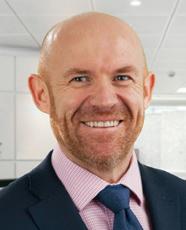
Ian Meaden, COO of EMCOR UK, argues for organisational commitment to nurturing talent and cultivating a culture of continuous learning

In2023, Ciphr reported that 82 per cent of surveyed employees were more likely to have job satisfaction if they felt a sense of belonging at work. Seventy Eight per cent reported that they would feel loyal to their organisation if they belonged. It’s simple really – the better an employer can meet the needs of employees, the better its employee retention. Employees need to take centre stage, along with the environments that fuel their exceptional experiences. Among the many reasons to enhance this experience is that it’s pivotal to creating the right customer experience. To do that, leaders need to develop strong relationships and communicate e ectively with colleagues. Those dynamics shape the basis of my beliefs as a senior leader. When there is a unity of purpose in an organisation, we are much more likely to succeed, both internally and for our customers. For us, that means innovating workplaces backed up by engineering excellence.
Employees are empowered to anticipate customer needs and deliver exceptional services.
I started working at EMCOR UK in 1987 as an apprentice electrician before working my way up the ranks into a leadership position. Throughout my career, I have consistently found that customers value working with someone who takes the time to understand their business and what is important to them. My engineering background was beneficial as my experience in regulated and critical environments helped me to develop a logic that was transferable elsewhere; specifically, in our approach to understanding the e ectiveness of the workplace in supporting our customers to achieve their business objectives.
Now, I want to create customers for life, which is only possible with the help of engaged employees. We need our employees to be constantly curious, so we o er training based on the Cranfield School of Management’s Key Account Management (KAM)
programme. Our employees can consistently upskill. Employees should be supported, listened to, and given room for growth. Those principles shape part of our employee training and retention strategy because it is the best path to job satisfaction.
As an FM organisation, an indepth understanding of employee needs, from head o ice to frontline colleagues, is paramount, especially as this impacts the experiences of our customers. Healthy businesses require healthy mindsets, which requires an intersectional approach within our business.
Only a few decades ago, wellbeing teams, safety managers, and HR teams either worked in silos or were not part of the employee wellbeing and satisfaction development of an organisation.
Now, businesses need to develop a whole-person approach to develop internal social inclusivity. Project leaders need to collaborate with teams like the HR department, or a wellbeing and sustainability department, to develop a framework for employee wellbeing and support. The occupational health and safety management guideline for workplace psychological risk, ISO 450003, is an example of an actionable ESG standard that an organisation can hold itself accountable towards.
Physical risk should be addressed comprehensively too – especially when frontline workers comprise a
significant portion of the workforce. Our long-term commitment to customer collaboration and safety is evidenced by our recent wins at the 2024 Royal Society of the Prevention of Accident (RoSPA) awards. This highlights how we strive to go above and beyond the health and safety requirements across all our customer sites.
Strategic partnerships are one way to ensure that as your business grows, your people grow with it. We worked with the Cranfield School of Management to develop our KAM training course, working in tandem with our internal training.
Operations leaders and support teams are taught the principles of KAM so they can adopt a practical approach to planning, analysing and implementing closer relationships with our strategic customer accounts. Our employees are taught how to develop meaningful value propositions to deepen customer relationships.
In turn, we use KAM not just to measure our people’s success in terms of profits or numbers, but to evaluate their maturity and growth. The art of KAM is not just about quantitative insight, but about assessing emotional intelligence, so that no matter the situation of our customers, we know exactly what to do and support them.
Good training and development results in a strong and unified culture, based around a vision of innovating workplaces and engineering excellence. This is why we have developed teams to address the key customer concerns around energy and carbon management, impactful ESG delivery, workplace optimisation, and building and asset management, all underpinned by data-driven insight to guide every choice. These areas require constant communication and collaboration, requiring a humancentric ethos.
Moving forward as an organisation requires a people-first approach. It’s imperative to understand your employees’ challenges, nurture their development, and help them to articulate their needs, so that you can better serve customers and create a sense of satisfaction for all.

Sodexo UK & Ireland has made the GREAT British Employers of Veterans Top 50 list for 2024. The list was created to provide a comprehensive guide to the leading companies in which military veterans and other members of the Armed Forces family can build a meaningful career. The 2024 list was the first-time employers were ranked in order of achievement.


Sodexo, ranked 17 in the list, employs over 500 veterans across its organisation in all its business segments, roles and grades. Sodexo provides many opportunities to develop and grow in new roles whilst allowing people to draw on the valuable knowledge, skills and experience they have gained in their military careers.
Paul Anstey, CEO Government, Sodexo UK & Ireland said: “We are extremely proud and delighted to be included in this list. Supporting the Armed Forces plays a key part of our Social Impact Pledge.
“We recognise the value veterans can bring to our business and continue to focus on providing civilian career opportunities where we can. Our goal is to ensure our people feel like they belong, enable them to act with purpose and to thrive in their careers with us.”
A record number of chefs have graduated from BaxterStorey’s chef academy this year - with female chefs making up approximately a third of graduates.
Eighty-nine chefs graduated from the academy this year, with 27 women completing their development programmes.
The total number of chefs increased by a thirdreflecting the company's significant additional investment in specific academy-based training.
Compass Group UK & Ireland hosted a ‘Reverse Jobs Fair’ at Compass’ regional community skills and learning centre, Xcelerate with DFN Project SEARCH, a national charity aimed at supporting young people with a learning disability and/or autism spectrum condition into full-time employment.
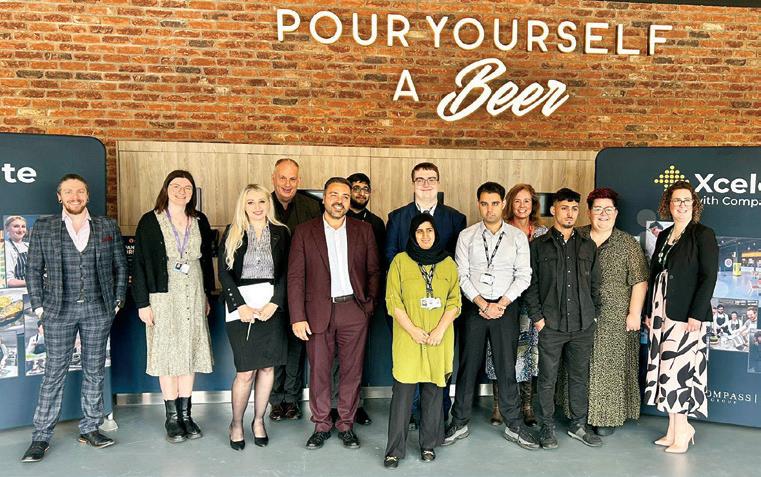
The fair brought together young people with a learning disability and/or autism spectrum condition and recruiters from the local area to get to know each other and discuss job opportunities. For the fair, each supported intern designed a display board with images and information about their placements. Interns used these boards as a starting point for talking to employers about their skills, experience and career goals.
The event is part of a partnership between DFN Project SEARCH, Compass Group UK & Ireland, Heart of Birmingham Vocational College, Mencap and Birmingham City Council, aiming to help young people gain the skills they need to transition to work and gain their independence.
Together with a community of partners, DFN Project SEARCH delivers Supported Internships – transition-to-work programmes – for young people in their final year of school or college, helping them make the positive transition to adulthood. The charity works in over 120 sites around the UK and is working to support 10,000 young people by 2030.
Xcelerate with Edgbaston is the first of Compass’ regional community skills and learning hubs for training and excellence. Designed to help with training, development and employment opportunities, this event perfectly demonstrates the value the hub brings to the local community.
Molly Williams-Leer, Programme Specialist at DFN Project SEARCH helped organise the fair and spoke about her impression of the day: “We love reverse job fairs because they allow interns to showcase their skills to hiring managers in a way that works for them. I was blown away by the enthusiasm of the employers who embraced this new format with open arms, spending lots of time speaking to each intern and even inviting some of them to apply for open positions. You could see the immediate impact this had on our interns, who became more confident with each employer they spoke to.”


In the last year, the hospitality business has placed great emphasis on creating inclusive kitchens, driven through a range of programmes and activity. Inclusive kitchen workshops, launching the inclusion by design pillar as part of their Second Nature ESG commitments and their Level 5, Year 2 academy students projects focused on creating a culture of a positive kitchen environment and a companywide engagement survey.
The company also launched the ground-breaking RISE - a network developed to drive gender equality, achieve better representation of women at senior levels, and champion diversity both within the business and wider hospitality industry.
UK workers are optimistic about new opportunities and ways of working, but the pace and magnitude of change is overwhelming, according to PwC's Hopes and Fears Survey. The survey of over 56,600 workers in 50 countries, including 2,000 in the UK, finds that workers recognise the potential of GenAI to improve their e iciency and workload, creating opportunities for employers to drive innovation, with three times as many (57 per cent) workers this year saying that GenAI could help them to be more e icient compared to last year (19 per cent).
Alastair Woods, Workforce Transformation Partner at PwC UK, said: “GenAI holds immense potential, but this will only be realised if employers equip people to use it and allow
for experimentation. The research tells us that as AI changes how businesses operate, skills must change too. Employers must engage employees in the transformation ahead and map out the new skills needed in key parts of the workforce.”
The survey also found that the workers' confidence that their skillset won’t need to change in the near future varies by generation. This sentiment is particularly strong among older generations, with only 19 per cent of Gen X and baby boomers anticipating a substantial shi in the skills required within the next five years, compared to 31 per cent of millennials and Gen Z.
www.pwc.com/gx/en/issues/workforce/hopesand-fears.html
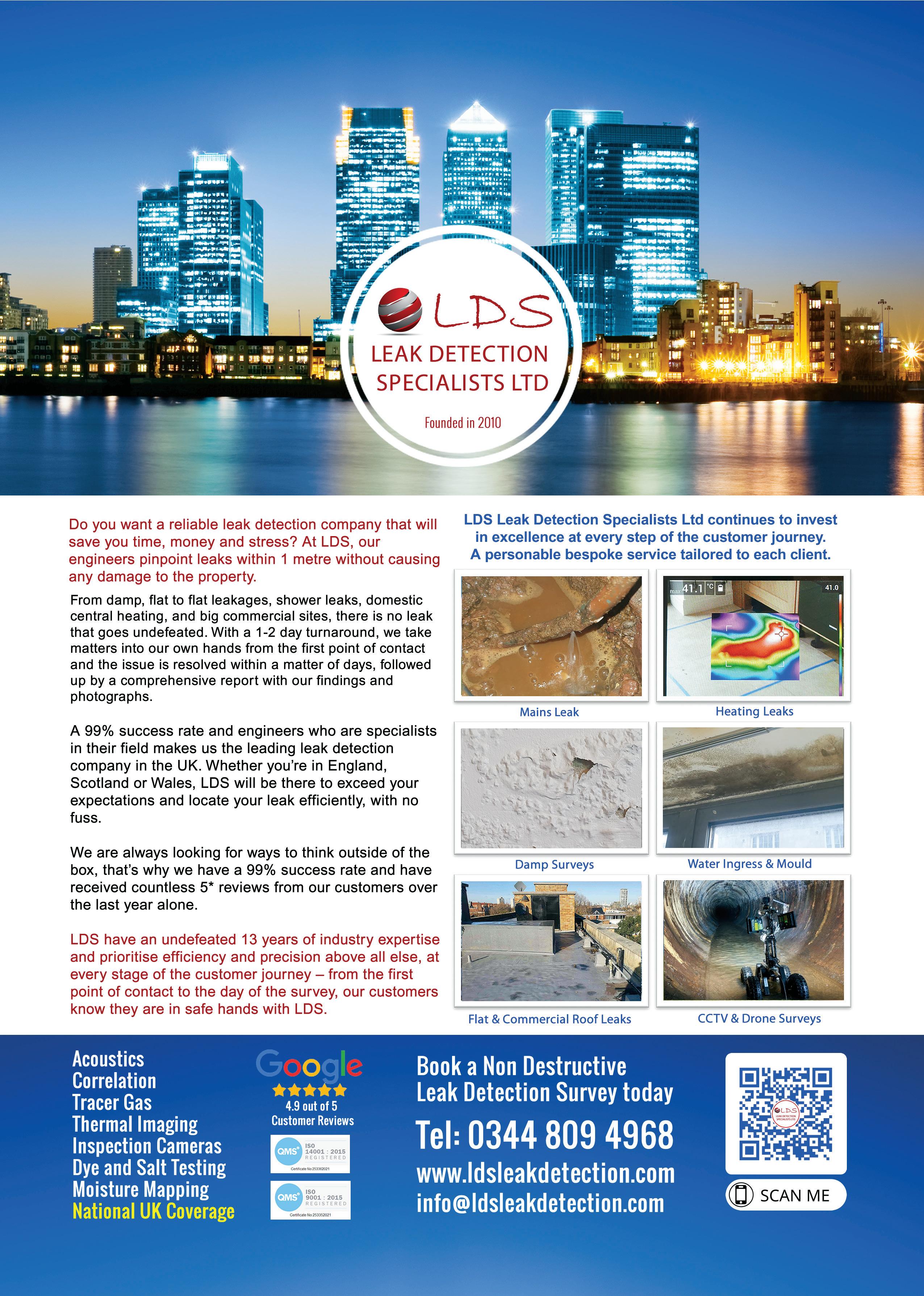

The Tork Office Hygiene Package
67% of employees say that they are more likely to complain about a washroom than any other aspect of their office.* Cut complaints by ensuring that cleaning and washroom maintenance are run well and efficiently with the Tork Office Hygiene Package.™
tork.co.uk/officehygiene
*June